Fantasy Books
Book Review: Feeders by Matt Serafini
I received a review copy from the publisher. This does not affect the contents of my review and all opinions are my own.
Mogsy’s Rating: 4 of 5 stars
Genre: Horror
Series: Stand Alone
Publisher: Gallery Books (May 20, 2025)
Length: 416 pages
Author Information: Website | Twitter
I just recently watched The Substance, that crazy body horror movie starring Demi Moore, and my brain still hasn’t fully recovered. It’s the kind of dark satire that relishes making you uncomfortable while shining a twisted light on our deepest societal insecurities, especially with regards to vanity and self-destruction. With Feeders by Matt Serafini: same vibes, but different angle. While the book doesn’t do sci-fi or transformational horror, it does boast its fair share of gore and follows a protagonist so desperate for validation and celebrity that she’s willing to debase herself and hurt others to get it.
The story follows nineteen-year-old Kylie Bennington, a community college student using school as a stepping-stone toward something bigger—but what she really wants is to become an online influencer. Perpetually envious of her best friend Erin who has millions of followers on social media and gets comped gifts from sponsors, Kylie is hungry for the same attention and desperate to be someone, yet that dream always seems to feel just out of reach. That is until MonoLife comes into the picture. When a clip of a former classmate’s brutal murder begins circulating online, Kylie is made aware of the underground video sharing app, which features layers of cryptic rules and user levels. Signing up is easy, but keeping your account is another story. The first rule of MonoLife is you don’t talk about MonoLife, or you will face dire consequences. The app also requires at least two daily logins or else it will delete itself, resulting in loss of access forever.
Her curiosity piqued, Kylie is quickly drawn into MonoLife’s unique but warped culture, one driven by a userbase that thrives on edgy content that pushes boundaries. Her ambition also gradually turns to obsession as she becomes addicted to unlocking the app’s special levels, which are earned by gaining more followers and clout. In time, what started as a few harmless prank videos begin escalating to more extreme stunts and vile acts. Yet her audience is insatiable—and the more depraved the content she posts, the more the algorithm rewards her with fame and material wealth. Thus, by the time the story reaches its final act, Kylie has flung herself across just about every ethical line there is.
First, let’s talk about the characters. These are all awful people, which is fine because you are definitely meant to despise and occasionally even pity them. These aren’t just morally gray personalities; some are darker than the pits of hell. Kylie, for one, is equal parts horrifying and fascinating—a vain, self-absorbed, and unstable powder keg willing to go to any length for subscribers and likes. While I had to keep reminding myself that her over-the-top characterization is by design, there’s also something disturbingly real about her zeal, considering the numerous studies showing that a large percentage of Gen Zers list social media influencer as their dream job. For what it’s worth though, Serafini even doesn’t try to redeem his protagonist, and I respect that. It makes you question if Kylie was ever a good person, or if her thirst for fame was always just lurking beneath the surface—probably the case, given her obsession with influencer culture and the way she worships her hero Katy Perry like a religion.
As for the horror, all I can say is, it works, even as several styles are vying for dominance here. On the one hand, you have bloody violence aplenty, enough to satisfy genre lovers whose tastes might run towards slasher flicks. On the other, there’s the existential dread, the why behind Kylie’s downward spiral into depravity and corruption. MonoLife doesn’t just encourage evil. It rewards it by triggering those surges of dopamine, leading to a need for increasingly higher doses for more intense engagement. Feeders is a brutal metaphor for the worst parts of social media, and watching Kylie succumb to it is a lot like watching a car crash in slow motion—you simply can’t look away.
My final verdict: Feeders is a dark and disturbing novel steeped in social commentary, one that feels especially relevant in these hyper plugged-in times. Bear in mind it’s also a satire that’s completely over-the-top and not at all shy about making you squirm. So, if you’re into bold topical horror that holds absolutely nothing back, this book might be for you. Who it’s not for are the squeamish, or for readers looking for happy endings and sympathetic characters to root for. Still, it leaves an impression, and maybe even a few lingering thoughts to chew on.
![]()
![]()
10 Days in Haunting “Ten Sleep” by Nicholas Belardes
Ten Sleep is a supernatural modern-day western about a trio of young people on a…
The post 10 Days in Haunting “Ten Sleep” by Nicholas Belardes appeared first on LitStack.
Book Review: Anji Kills A King by Evan Leikam
I received a review copy from the publisher. This does not affect the contents of my review and all opinions are my own.
 Anji Kills A King by Evan Leikam
Anji Kills A King by Evan Leikam
Mogsy’s Rating: 4 of 5 stars
Genre: Fantasy
Series: Book 1 of The Rising Tide
Publisher: Tor (May 13, 2025)
Length: 368 pages
Author Information: Website
Anji Kills a King by Evan Leikam made me realize something. Fantasy doesn’t always need grand epic battles or ancient prophecies to pull you in. Sometimes all it takes is one bold act by a single person.
The title even tells you what to expect. Anji, a young palace laundress, slits the king’s throat in the book’s opening pages, and everything that follows is one wild bloody, ride. Immediately after that spur-of-the-moment assassination, our protagonist goes on the run and is almost just as immediately apprehended by a notorious bounty hunter known as the Hawk. A member of the Menagerie, a legendary organization consisting of mercenaries who wear animal-shaped masks, the Hawk is determined to bring her prey back to face justice and collect the massive cash prize on Anji’s head. Thus, the prisoner becomes physically and magically tethered to the captor, forming a bond that neither of them wants.
Pretty soon, Anji also realizes there’s more to the Hawk’s reasons for chasing her than just gold. She’s not working with the rest of the Menagerie, for one. As they are relentlessly pursued by the Hawk’s former colleagues and other factions that want to see Anji silenced or dead, the two of them are forced to travel through some of the roughest parts of a fractured and war-torn kingdom. It’s a path littered with traps and pitfalls, and with every close call, their uneasy alliance is tested, forcing both to question who their real enemies are and what they’re willing to do to survive.
For a story featuring such epic scope and widespread conflict, Anji Kills a King feels remarkably intimate and personal. While it’s clear that our protagonist’s act of regicide has thrown more fuel on an already blazing fire of political unrest, all that chaos remains only ambient noise in the background. The real story, and what truly matters here, is the relationship between two people. We already know the world outside is falling apart, but Leikam keeps the spotlight tight on Anji and the Hawk, making their complicated relationship the core of the novel.
It helps that both our main characters are fascinating figures, just as likely to frustrate you as they are to charm you. Anji is someone who might seem a little dumb and reckless at first. After all, she kills a king on impulse, and then, instead of getting the hell out of dodge, she winds up getting caught while drinking and gambling at a tavern. The Hawk, in contrast, is all sharp edges and discipline, an older professional who doesn’t take any chances, even if it means carrying out what might seem like cruel decisions. This dynamic carries the book, especially when the tone of the story darkens and the struggle between the controller and the controlled gradually evolves into understanding and then grudging respect.
If I had any criticisms at all, it would be the plot’s tendency towards reusing the same devices. Like I said, this is a story meant to feel up-close-and-personal and relatively small-scale, so more variety is going to be needed. Anji and the Hawk end up spending a lot of time running through the same loop of evading the bad guys, narrowly escaping, getting caught, and breaking free—rinse and repeat. There are interesting moments in between, but after a while, the pattern can’t be denied. And while the writing is sharp and keeps things moving at a good speed (this was a quick and easy read), the big emotional moments don’t always feel as significant as they should. Often, it’s almost as though the book is already racing ahead to make its next big impact before the dust of the last one has even settled.
All in all, Anji Kills a King is a fast-paced, riveting debut with plenty of grit from both the story and the characters. Dig a little deeper though, and there’s a surprising amount of heart. While the novel doesn’t offer anything too new for those of us who read a lot of fantasy, Evan Leikam succeeds in delivering memorable characters and interesting world-building, even if the latter is quietly done. This is a book I would recommend to genre fans who enjoy following heroes who get into lots trouble but somehow manage to keep going anyway. I’ll be checking out the sequel.
![]()
![]()
The Old-Fashioned Way: Tove Jansson’s Hobbit Illustrations
Okay — close your eyes and visualize Middle-earth. I can’t be certain what you’re seeing behind your eyelids, but I think I have a good chance of guessing; five will get you ten that whatever you’re conjuring bears a strong resemblance to the Alan Lee Lord of the Rings book illustrations and to Tolkien’s world as envisioned in Peter Jackson’s films (on which Lee and John Howe did much of the production design).
The austere, rather chilly (once you’re out of the Shire, anyway) Lee/Howe template has become the default picture of Middle-earth for many — if not most — people, but there are other ways to view Tolkien’s realms and their inhabitants. I have already sworn my fealty to the first such visualization that I ever encountered: the beautiful Tim Kirk paintings that were featured in the 1975 Tolkien Calendar.
I am also partial to another version that’s not nearly well enough known, the gorgeous illustrations done by Michael Kaluta for the 1994 Tolkien Calendar. (Kaluta is probably best known for his comic book work, especially on the 1970’s Shadow for DC.)
One thing that makes both Kirk’s and Kaluta’s art so attractive to me is that its depiction of Middle-earth is just different from the one that has become the current standard. (Kaluta’s work is especially striking because it is so extravagantly colorful compared to Lee’s and Howe’s bleached-out work.)
Also, please understand, I — who cannot draw a straight line — am not criticizing the fine work of Lee and Howe or any other artist, merely pointing out that there are other, equally fruitful ways of looking at Tolkien’s creations.
All of which is to say that there’s more than one way to skin an orc — or draw a dwarf — and alternate visions can come from unexpected places, as I found out last Christmas when my daughter Samantha gave me a gift that was a real surprise — a Finnish edition of The Hobbit. Instead of coming from an Amazon warehouse, it came all the way from Finland (I was told that it arrived just in the nick of time), and is indeed in the exotic-looking Finnish language, which, uh… I can’t read a word of (except for “Bilbo” and “Gandalf”, which are apparently the same in Finnish, and I think I’ve figured out that dwarves are kääpiötä).
Nevertheless, it was a wonderful gift, because it’s illustrated by Tove Jansson, who was herself wonderful.
 Tove Jansson and friends.
Tove Jansson and friends.
Jansson (who died in 2001) was a Finnish artist and writer who is probably best known (outside of Scandinavia, anyway) for the eight “Moomin” children’s fantasies she wrote beginning in the mid-1940’s and ending with the last volume in 1970. Set in Moominland and featuring the Moomin family and their eccentric friends (Moomins look sort of like hippos, or ambulatory marshmallows), the books are whimsical, dreamlike, gentle, satirical and sinister, all at the same time. I only recently discovered them, and I find them disquieting and delightful, which is one of the best combinations going.
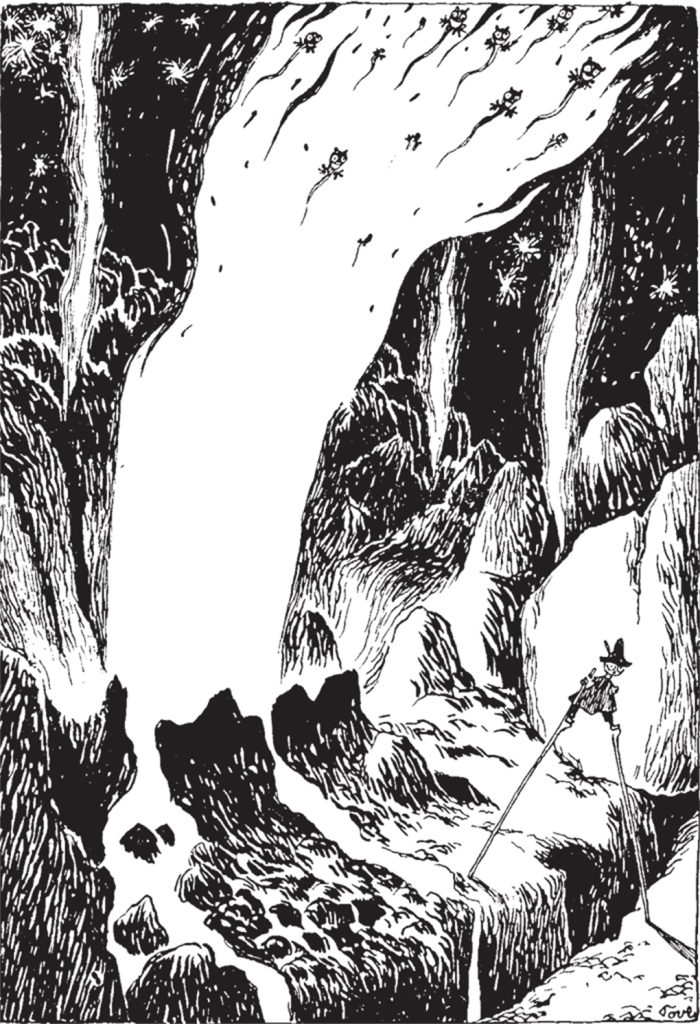 From Comet in Moominland. ©the estate of Tove Jansson
From Comet in Moominland. ©the estate of Tove Jansson
Jansson illustrated the Moomin stories herself, and her pen-and-ink drawings are some of the best things about the books. The illustrations for the first book in the series, Comet in Moominland, are especially striking; some of them are a cross between a kind of nightmare Lovecraftian landscape and the surreal imagery of William Hope Hodgson’s The Night Land.
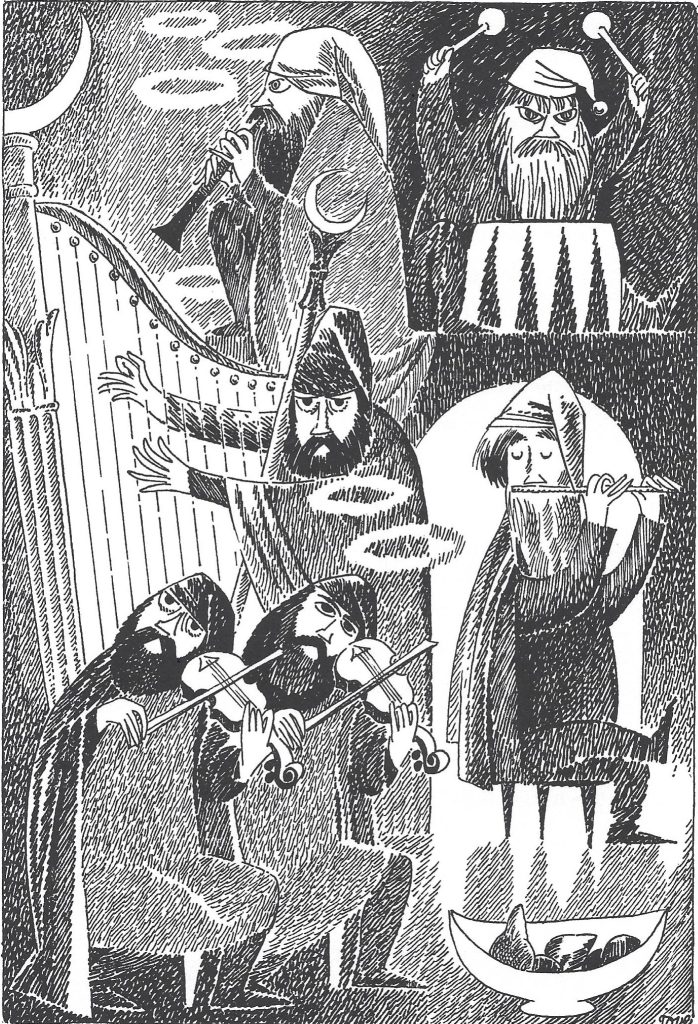 The Dwarves. ©the estate of Tove Jansson
The Dwarves. ©the estate of Tove Jansson
Though I’ve steadily been working my way through the Moomin books, I wasn’t aware until I had the Finnish Hobitti in my hands that Jansson had illustrated anyone else’s work. One look at her gorgeous cover illustration made me glad that she did. (There will always be a special place in my heart for a rampaging dragon.)
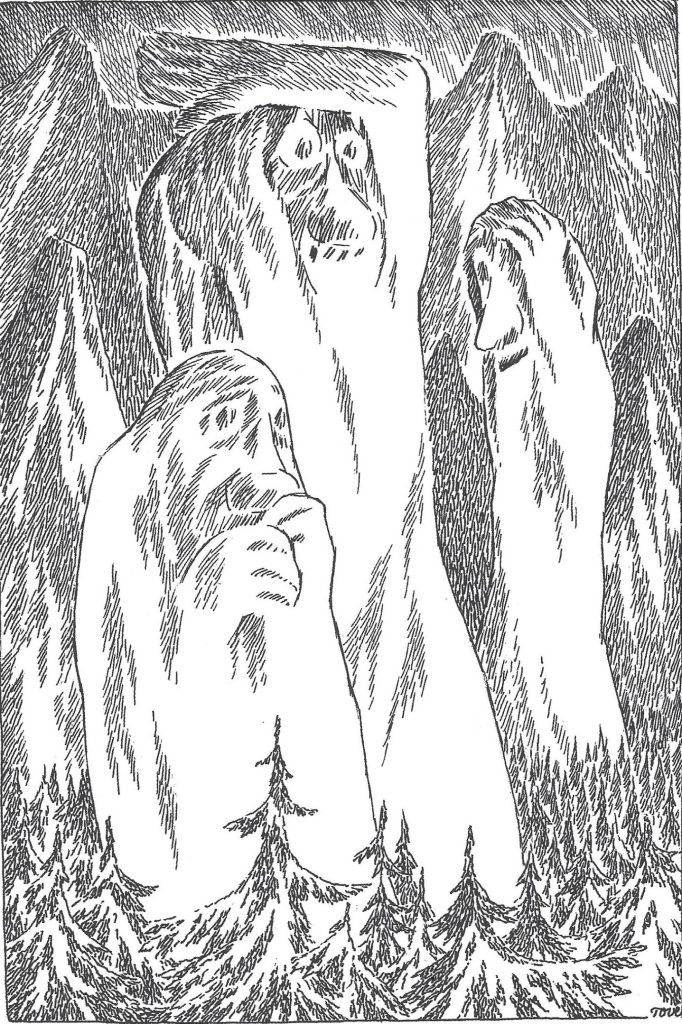 The Trolls. ©the estate of Tove Jansson
The Trolls. ©the estate of Tove Jansson
Jansson did her Hobbit illustrations for a 1962 Swedish edition (she was a member of Finland’s Swedish-speaking minority community) and they are refreshingly different from the more realistic renderings of Middle-earth and its inhabitants that are common today. She did twelve full-page black-and-white drawings for the book, another ten that cover half to a third of a page, and many smaller drawings that decorate the beginning or end of chapters.
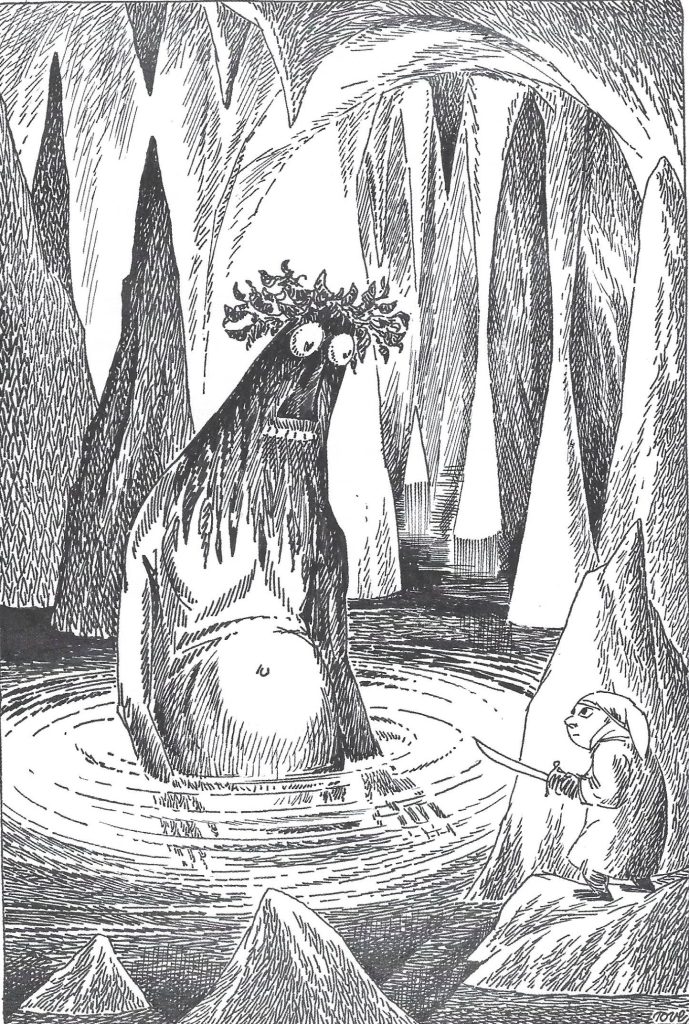 Bilbo and Gollum. ©the estate of Tove Jansson
Bilbo and Gollum. ©the estate of Tove Jansson
One thing that will immediately stand out to any Tolkien lover who flips through Jansson’s Hobitti is her visualization of Gollum. In Jansson’s drawings he’s huge, towering over Bilbo, and when Tolkien saw these illustrations, he supposedly realized that he had never specified exactly how large the slimy creature was, and so made the appropriate corrections for the Hobbit’s next edition, cutting Bilbo’s antagonist down to size.
 The Wargs. ©the estate of Tove Jansson
The Wargs. ©the estate of Tove Jansson
Jansson’s Tolkien illustrations are all her own; they’re not like any other rendition of Middle-earth that I can think of, and in comparing these wonderful pictures with more current ones, you can glimpse an older tradition, one that has its roots in the “North” that Tolkien loved, one that goes back to the sagas and Norse eddas that gave him his inspiration.
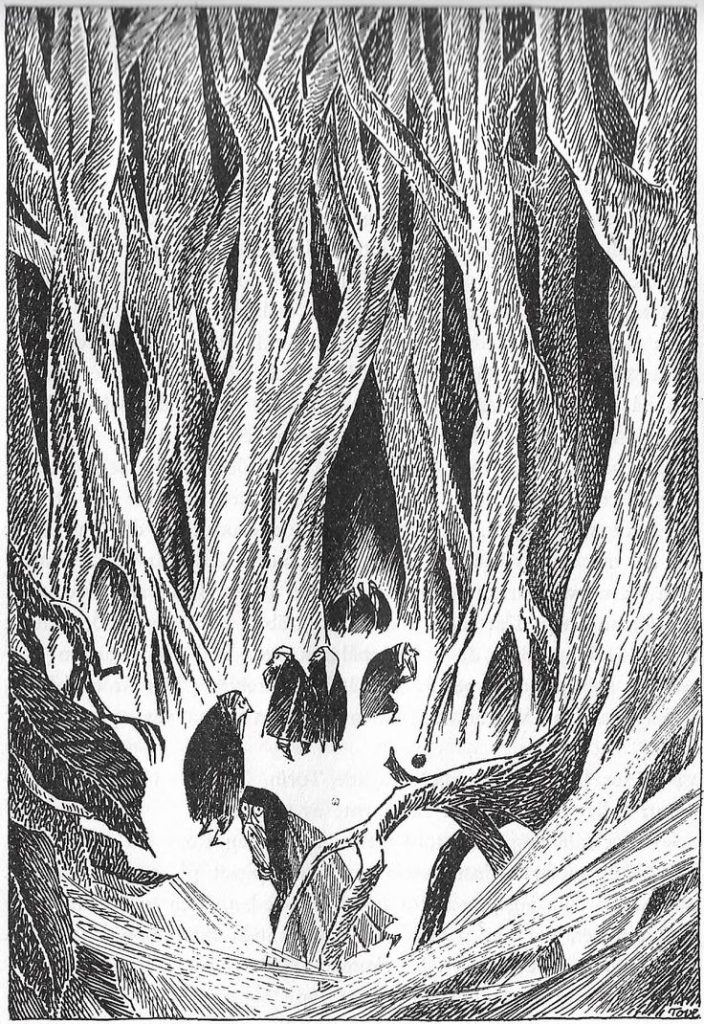 Mirkwood. ©the estate of Tove Jansson
Mirkwood. ©the estate of Tove Jansson
These simple-looking illustrations may not be to the taste of folks raised on fantasy photorealism (of course, in the hands of a true artist, there are few things deeper and more nuanced than simplicity), but I love them; their bold, expressionist lines combine the weird and the whimsical, the humorous and the beautiful, all with echoes of the heroic and the epic. I think Tove Jansson was a perfect match for Tolkien and his world.
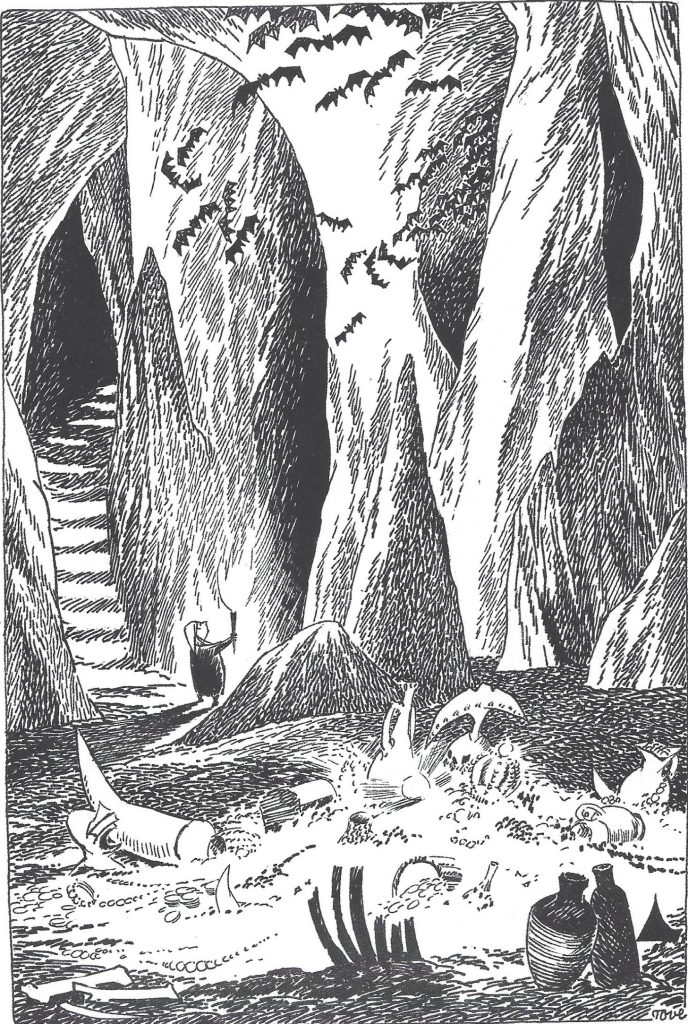 Smaug’s Treasure. ©the estate of Tove Jansson
Smaug’s Treasure. ©the estate of Tove Jansson
Just the other day I found out that Jansson did illustrations for Lewis Carrol’s Alice’s Adventures in Wonderland; NYRB Classics has just published a new edition featuring her drawings. Seeing what sparks Carrol’s story struck from Jansson is a rabbit hole I can’t wait to go down.
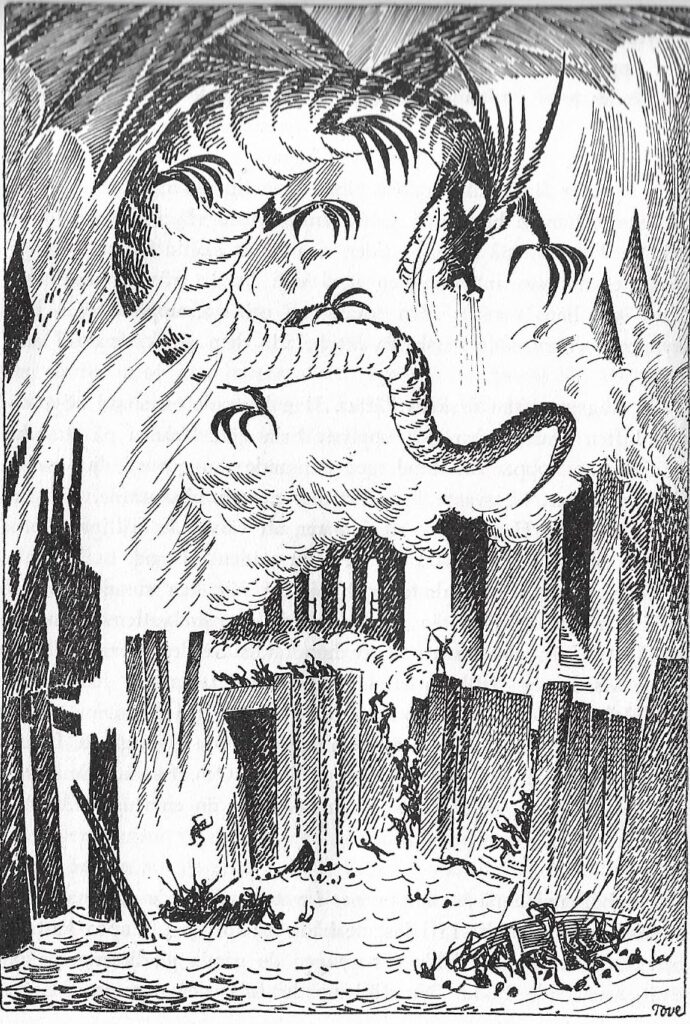 Smaug destroys Lake-Town. ©the estate of Tove Jansson
Smaug destroys Lake-Town. ©the estate of Tove Jansson
Until I can report back on Jansson’s Alice, I commend her Hobitti to you (her Moomin books, too), and I leave you with this:
Kaikki asekuntoiset ihmismiehet ja suurin osa haltiakuninkaan joukoista valmistautuivat marssimaan pohjoiseen Vuorta kohti. (What does that mean? I dunno, but it comes at the end of chapter Tulta Ja Vettä.)
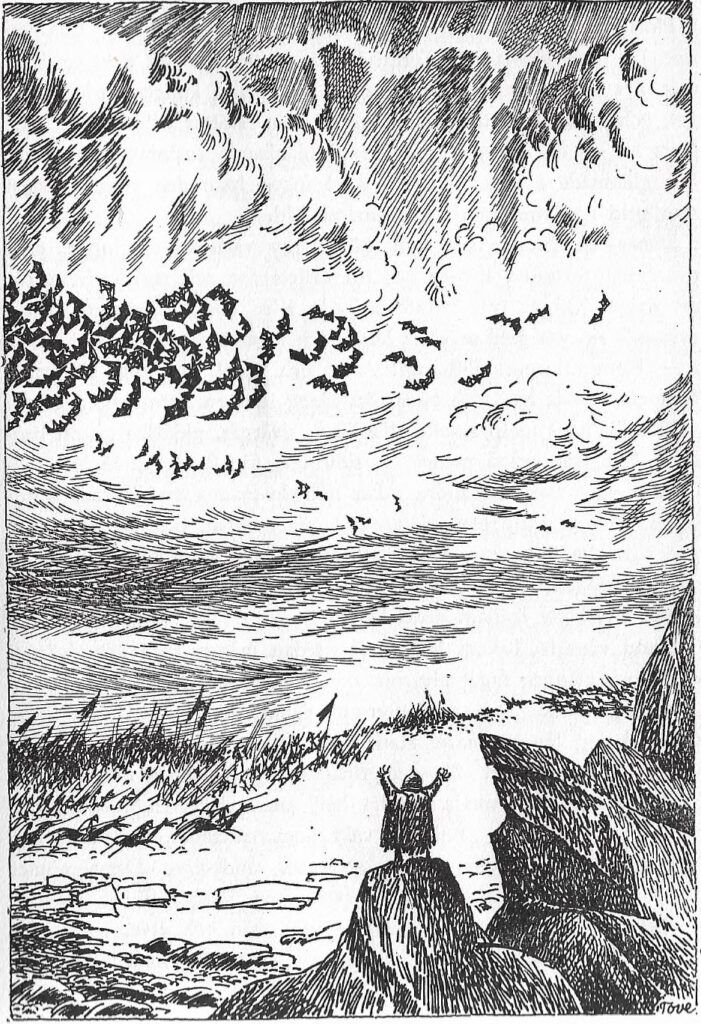 The Battle of Five Armies. ©the estate of Tove Jansson
The Battle of Five Armies. ©the estate of Tove Jansson
Thomas Parker is a native Southern Californian and a lifelong science fiction, fantasy, and mystery fan. When not corrupting the next generation as a fourth grade teacher, he collects Roger Corman movies, Silver Age comic books, Ace doubles, and despairing looks from his wife. His last article for us was The Lost World
7 Author Shoutouts | Authors We Love To Recommend
Here are 7 Author Shoutouts for this week. Find your favorite author or discover an…
The post 7 Author Shoutouts | Authors We Love To Recommend appeared first on LitStack.
Review: The Incandescent by Emily Tesh

Buy The Incandescent FORMAT/INFO: The Incandescent was published by Tor Books on May 13th, 2025. It is 432 pages long and is available in hardcover, ebook, and audiobook formats.
OVERVIEW/ANALYSIS: As the Director of Magic at Chetwood Academy, one of the most prestigious boarding schools in England, Dr. Walden's day is full of everything from faculty meetings to demons trying to break through the school's wards. She is constantly torn between keeping up on mundane admin while trying to stop idiot teenagers from messing with magic beyond their capabilities. But what is Dr. Walden to do when the greatest threat to the school might be herself?
The Incandescent is a fresh spin on the magical academia genre, where the overworked, underpaid faculty at an elite boarding school get to shine front and center. Nearly, if not all, magical academia books I have read have been from the POV of the students. I've seen plenty of books where a group of scrappy teenagers discovers a dark conspiracy afoot at their school. They sneak behind teachers' backs, dabble in a bit of forbidden magic or research, and generally defy authority, all in the name of saving the day.
But let's face it, many teenagers aren't noble heroes on a quest - they're idiots. Enter the exasperated staff of Chetwood Academy, trying to help shape students on their quest to discover their path in life, while also making sure they don't fall prey to demonic possession because they cut corners while drawing a summoning diagram. Dr. Walden and her staff are just as often trying to save the students from themselves as much as from outside threats, all while grading papers, offering career counseling, and managing the school's budget.
The Incandescent also takes a moment to examine and critique the whole structure of elitist boarding school culture. It examines the notion that what parents aren't paying for isn't really a top tier education; they're paying for their child to join the network of alumni scattered across the country and use that network for the rest of their lives. It's the social connections that truly matter to most parents, the security of knowing their child will have plenty of contacts who will open doors for them in the future. This in turn perpetuates systemic class disparities, as most often only those who can pay for the connections, get the connections.
I want to take a moment to note that while the marketing for this book makes a point of mentioning this is a sapphic story, you shouldn't expect a sweeping romance. Relationships are just one part of Dr. Walden's life, and certainly not the focus - which is good, because I found those romance dynamics one of the weaker parts of the story. On the one hand, I liked that Dr. Walden is grappling with the complications of juggling potential romance with the demands of her career. But there was just no chemistry between Dr. Walden and her love interest, leaving not particularly interested in what happened on that front.
CONCLUSION: The Incandescent is a worthy addition to the shelves of magical academia, and any fan of the genre should give it a read. It examines school culture from the rare perspective of the teacher, but it doesn't put forth that the teachers have all the answers; one of the best scenes is a student who challenges Dr. Walden's notion of how well their life situation and an elite boarding school education track go together. It gives you food for thought while also being an entertaining blend of school exams and demonic invasions, making The Incandescent a definite recommend.
Review of The Knight and the Moth by Rachel Gillig
As a Bookshop affiliate, I earn from qualifying purchases. The Knight and the Moth is the first book in The Stonewater Kingdom, a new gothic/romantic fantasy series by New York Times bestselling author Rachel Gillig. This was one of my most anticipated books of 2025 because One Dark Window, the author’s debut novel and the first book in The Shepherd King duology, was a fun, difficult-to-put-down story—and, as such, was one of my favorite books of 2022. Unfortunately, I was […]
The post Review of The Knight and the Moth by Rachel Gillig first appeared on Fantasy Cafe.Nosferatu: Was It the Time Change What Killed The Beast?
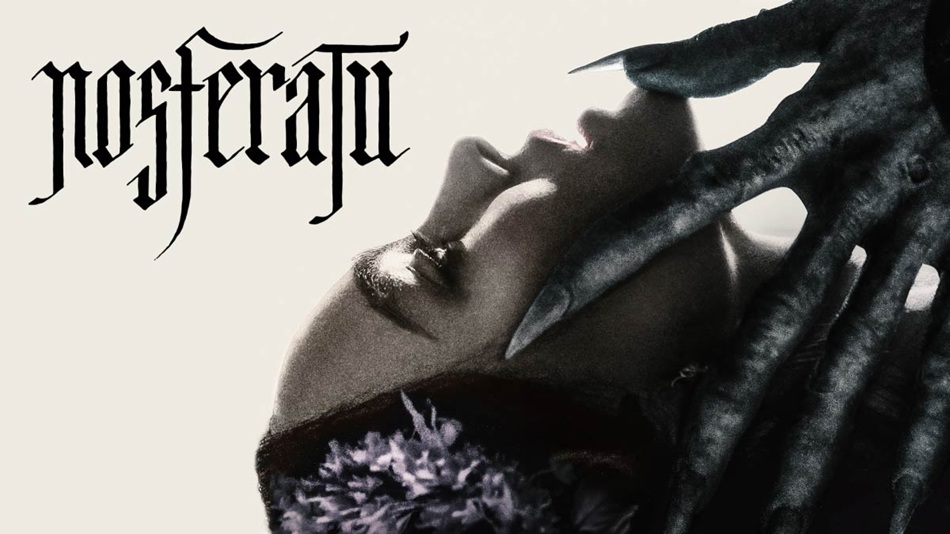 Nosferatu, written and directed by Robert Eggers, based on Nosferatu: A Symphony of Horror (1922), written by Henrik Galeen, and Dracula, penned by Bram Stoker in 1897.
Reboots and Adaptations
Nosferatu, written and directed by Robert Eggers, based on Nosferatu: A Symphony of Horror (1922), written by Henrik Galeen, and Dracula, penned by Bram Stoker in 1897.
Reboots and Adaptations
Okay. So I finally got around to watching Eggers’ version of FW Murnau’s classic from 1922, Nosferatu: A Symphony of Horror. By now, I think everyone knows the story behind FW Murnau’s Nosferatu, but here’s a brief summary: Murnau’s Nosferatu was an unauthorized adaptation of Bram Stoker’s Dracula, changing character names and locations but retaining the core plot elements. The film, which originally claimed to be adapted from Stoker’s novel, was made to avoid copyright issues and was eventually subject to legal action that nearly destroyed all prints.
Despite the name changes and some alterations, the film’s narrative largely follows Dracula’s journey, with the protagonist, Count Orlok (instead of Dracula), traveling to a new land — Romania to Germany, instead of Transylvania to England — and spreading a plague. Eggers’ reboot is definitely well made and impressive, and it has an other-worldly feel to it. It’s different from other vampire films. That being said, the original silent version is way creepier.
Now, allow me to digress for a paragraph or so. In 1979, there was a remake of the film — Nosferatu the Vampyre, known in Germany as Nosferatu: Phantom of the Night — directed by Werner Herzog and starring Klaus Kinski as Count Dracula. Yes, all Stoker’s character names were used in this film version. Not a bad film, but a bit anemic, you should pardon the pun. There’s also a fun flick from 2000 called Shadow of the Vampire, a fictional telling of the making of the silent Nosferatu, in which Willem Dafoe (who also has a role in Eggers’ version) stars as Max Schreck, the real name of the actor who first played Nosferatu. The twist is this: Max Schreck is a real vampire — a vampire playing a human actor who’s playing a vampire. (Sort of a Victor/Victoria, with blood.) Now where was I? Oh, yeah.
Expect SexFirst off… yes, sex is at the heart of Eggers’ Nosferatu. Sex is at the heart of Stoker’s novel, which was written in the sexually repressed Victorian Era. Sex plays a part in almost every vampire film I’ve ever seen. Francis Ford Coppola’s Bram Stoker’s Dracula (1992), for example, is loaded with sex and nudity, like the Three Brides feeding on Keanu Reeves, one of whom is Monica Bellucci. There’s also a wild scene between Dracula (Gary Oldman), in wolf manifestation, humping Lucy Westenra (Sadie Frost.) Then there’s the love scene between Mina Harker (Winona Ryder) and Dracula, where she licks his blood off his chest.
So there’s nothing new on the sexual theme and subtext of this latest version of Nosferatu. In fact, Nosferatu owes a lot to Coppola’s Dracula, a film I am quite fond of, in spite of some cringe-worthy acting, dialog and miscasting. Gary Oldman was fantastic; he owns that role and that film, just as Lily-Rose Depp, the real star of Nosferatu, owns this film. I’ll come back to her.
AtmosphereEggers’ Nosferatu owes a lot to Coppola’s Dracula in its use of shadows and some “camera tricks.” It also boasts some exquisite scenery and set design, which convey the ideal atmosphere for the story. The cinematography by Jarin Blaschke is masterful, the film score by Robin Carolan is spot on, and there are some haunting audio FX that add to the grimness of this film. The script pretty much follows the plot of the original screenplay by Henrik Galeen, but doesn’t owe much to Bram Stoker, other than his novel being the inspiration for the original, silent film.
I found this extended version to be a bit — (a bite?) — too long (in the tooth?) because it was almost deadly-dull at times. It moved as slowly as a corpse first waking up as one of the Walking Dead. The film spent too much time on mood and set up, and the first two acts I found to be somewhat tedious and boring. Not enough was happening! I did not find it at all exciting. It was like watching a pair of heroin addicts playing chess. The third act picked up some energy, but by then I was yawning. The plague of rats was pretty cool, though. There are a lot of rats in this film. I mean, a lot of rats.
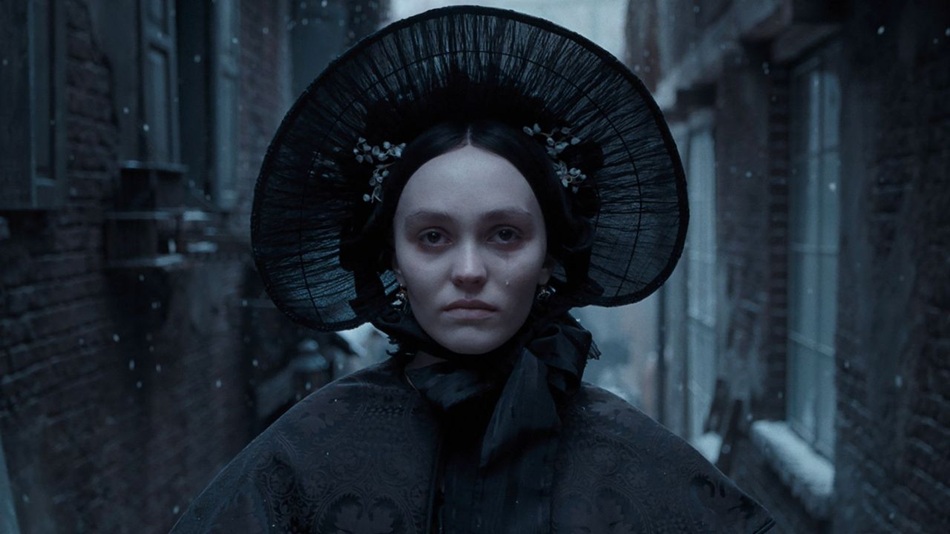 Lily Rose from Nosferatu 2024
Casting
Lily Rose from Nosferatu 2024
Casting
The cast was capable but not exceptional. They did their jobs and they did well enough. Willem Dafoe did a stand-up job, however, and in only one brief scene does he go over the top. I just couldn’t get emotionally attached or involved with any of the characters — except for Lily-Rose Depp. This is her film and she totally owns it. Her performance as Ellen Hutter (Mina Harker, in Stoker’s novel) is powerful and spot-on in every scene. She nails it and steals the show. She is put through the emotional ringer in this film — loving, angelic, quirky, possessed, demonic — you name it, she throws it all up there on the screen. She blew me away with a solid, heroic performance that was never over-the-top. She was brilliant. Her self-sacrifice in the final act is a powerful scene, and a sad one, as well.
As for the two kids who play the children of Anna Harding and Frederich Harding (Emma Corrin and Aaron Taylor-Johnson) I found them to be as annoying as a blister on the tip of my big toe, and when Nosferatu feeds on them, I cheered him on. It’s a brief, darkly-lit scene that quickly shift’s to Anna who sees her children being devoured, and the look on her face and her scream of horror, followed by her final fate, is chilling. That was a good bit. As for Bill Skarsgård, the other major player in Nosferatu and the title character…
I’m a fan. I’ve enjoyed his work in such films as John Wick, The Crow, and as Pennywise in the theatrical version of Stephen King’s IT — a feat of acting that, considering Tim Curry’s wonderful Pennywise, I applauded because he made the role his own: his Pennywise was the only good thing about that version of King’s novel.
But as for his take as Nosferatu… it didn’t work for me at all. I did not care for the make-up or the way he portrayed the character. There was nothing “supernatural” about him. He was just a force of evil, more like a big, hulking brute… and maybe that’s what Eggers wanted. I know The Last Voyage of the Demeter was not very well received, but I enjoyed that film and got a genuine sense of Dracula as being demonic, sorcerous, powerful, and evil. I didn’t get any sense of what Nosferatu felt for Ellen (Mina), no lost love, no real idea of why he wanted her, nothing about her being the reincarnation of a lost love. He says something about her not being of this world, of not being human or belonging to the living world — whatever. I must have missed something about how they were connected, but I’m not going back to “watch again,” at least not for the time being.
When Skarsgård’s dialog was in Romanian, it was subtitled in English. But when he spoke English, his accent was very difficult for me to understand. I was like, “What the hell is he talking about?” I kept expecting the villagers from Young Frankenstein to show up and shout in unison: WHAT?
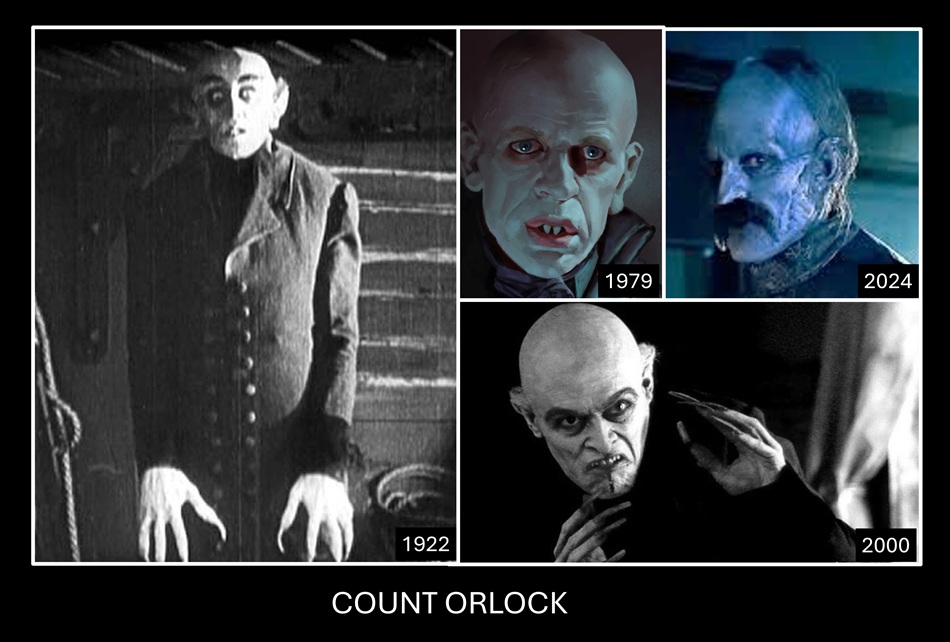 1922 MAX SCHRECK Nosferatu; 1979 KLAUS KINSKI Nosferatu the Vampyre; 2000 WILLEM DAFOE Shadow of the Vampire; 2024 Bill Skarsgård Nosferatu
Omnipotent Vampire Ignores Chicken, Dies
1922 MAX SCHRECK Nosferatu; 1979 KLAUS KINSKI Nosferatu the Vampyre; 2000 WILLEM DAFOE Shadow of the Vampire; 2024 Bill Skarsgård Nosferatu
Omnipotent Vampire Ignores Chicken, Dies
Now, here’s the problem I always had with the original version of Nosferatu, and with this one, too. I find it funny that an ancient, demonic, powerful vampire could become so besotted with blood and sex that he doesn’t see the sun rising and doesn’t pay attention to the cock’s first crowing. By the time of the second crowing, it’s too late. Didn’t he see or feel the sunlight shining through that honking-big window? Did he leave his watch at home? Did he forget about the time change? Or… maybe he knew that there was nowhere he could run and hide, because the coffin(s) full of his native soil had been destroyed. Or was this his fate, his desire — to perish in the arms of Ellen Hutter? I think that was it, because he could have let anyone destroy him at any time, if he wanted death and oblivion, but he wanted her to be his doom, he wanted to take her with him, to be with him forever in death. But what do I know? I’m not a real film critic. I’m just hear to entertain you Black Gate readers.
Check Out My DisappointmentI do not hate or dislike this version of Nosferatu. I am just disappointed in it. All the hype about this film, the word-of-mouth, gave me expectations of something I imagined would be a revelation, a landmark in moving pictures and vampire flicks in general. Thus, not getting what I expected, I was disappointed. It happens. And that’s on me. But if you haven’t seen the film, don’t let my review stop you from doing so. Check it out. You might like it. I’m sure I’ll watch the film again. Maybe it will grow on me. There are many favorite films I did not enjoy on first viewing, and vice versa, too. Anyway, Nosferatu was a big hit, it’s popular and made lots of $$$$$, so that should tell you something. One thing I do know… Lily-Rose Depp is going to have one helluva fine film career. I look forward to seeing her in more films.
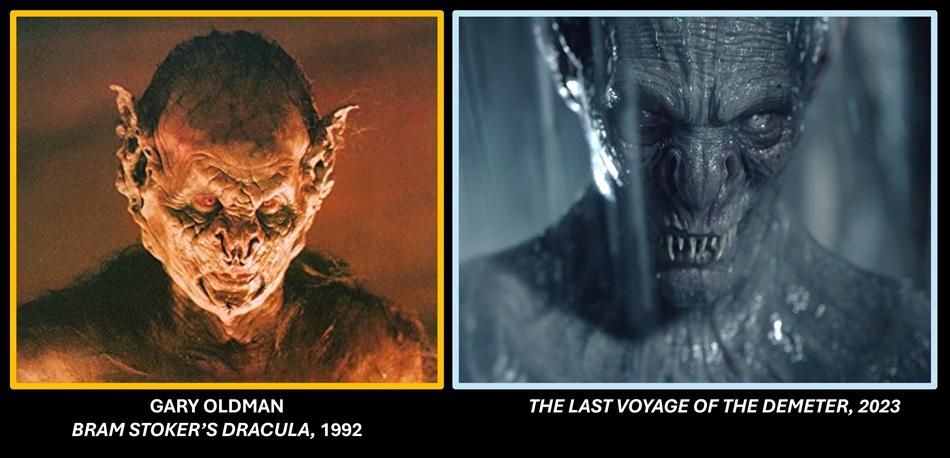 Left: GARY OLDMAN – BRAM STOKER’S DRACULA, 1992 Right: THE LAST VOYAGE OF THE DEMETER, 2023
Left: GARY OLDMAN – BRAM STOKER’S DRACULA, 1992 Right: THE LAST VOYAGE OF THE DEMETER, 2023
Joe Bonadonna is the author of the heroic fantasies Mad Shadows — Book One: The Weird Tales of Dorgo the Dowser(winner of the 2017 Golden Book Readers’ Choice Award for Fantasy); Mad Shadows — Book Two: The Order of the Serpent; Mad Shadows — Book Three: The Heroes of Echo Gate; the space operaThree Against the Stars and its sequel, the sword and planet space adventure, The MechMen of Canis-9; and the sword & sorcery pirate novel, Waters of Darkness, in collaboration with David C. Smith. With co-writer Erika M Szabo, he penned Three Ghosts in a Black Pumpkin (winner of the 2017 Golden Books Judge’s Choice Award for Children’s Fantasy), and its sequel, The Power of the Sapphire Wand.
He also has stories appearing in: Azieran: Artifacts and Relics; Savage Realms Monthly (March 2022); Griots 2: Sisters of the Spear; Heroika I: Dragon Eaters; Poets in Hell; Doctors in Hell; Pirates in Hell; Lovers in Hell; Mystics in Hell; Liars in Hell; Sinbad: The New Voyages, Volume 4; Unbreakable Ink; Poetry for Peace; the shared-world anthology Sha’Daa: Toys, in collaboration with author Shebat Legion; and with David C. Smith for the shared-universe anthology, The Lost Empire of Sol.
In addition to his fiction, Joe has written numerous articles, book reviews and author interviews for Black Gate online magazine.
“Measure of Devotion” Measuring an Outcome | Love, War, and Surrender
LitStack is excited to share Allie Coker’s review, an engaging exploration of the characters, key…
The post “Measure of Devotion” Measuring an Outcome | Love, War, and Surrender appeared first on LitStack.
THE NIGHT BIRDS by Christopher Golden
Spotlight on “A Promise to Arlette” by Serena Burdick
A Promise to Arlette has the heart of a thriller, an evocative historical novel following…
The post Spotlight on “A Promise to Arlette” by Serena Burdick appeared first on LitStack.
Four Things I Think I Think: May 2025
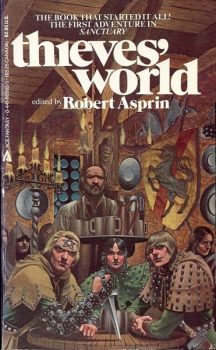 Time to share a few things I Think I Think.
Time to share a few things I Think I Think.
I mean, what’ the point of having your own blog column if you can’t share your opinion on whatever you want to? Right???
1 – The Black Company Remains One of My Favorite Series’
I’ve written multiple times that audiobooks fit my lifestyle these years. I still enjoy reading a print book, and the digital format has made a LOT of long out-of-print Pulp, available. But I listen to audiobooks while I work, write, game, drive, and even fall asleep. I get to stuff I’d not, otherwise.
Last year I listened to the entire Black Company series (minus Port of Shadows). I have read the entire thing at least three times through, and this was my first listen. Last month, as I was doing a couple of long runs, I decided I wanted to listen to The Black Company (book one). during them. And here I am a month later, on Water Sleeps, the second-to-last book (I only have Port of Shadows in hardback, so excluding that from the discussion at present).
The initial trilogy is definitely my favorite part. The last two, my least. But this foundational series in the dark fantasy/grimdark subfield, endures. It remains a terrific read/listen, and I’m excited that the new chapter kicks off this Fall with Lies Weeping (an internet scoop provided by your hard-working columnist last year, here on Black Gate).
The books are told from different characters’ viewpoints, so there are different narrators. They all work, but I like Marc Vietor (Croaker) the most.
If you’ve never read The Black Company, you’re missing out on one of fantasy’s best. If you have read it, you should definitely check out Fletcher Vredenburgh’s series on it, here at Black Gate.
2 – Thieves World Deserves ‘Rediscovery’ Through the AudiobooksI began reading the marvelous shared-world universe of Thieves World back in the eighties, not long after it started. I’ve re-read it multiple times, and I have almost all the spin-off books. MANY an RPG thief/rogue has been named Shadowspawn. And Molin Torchholder has been in play for clerics.
I was thrilled last year to discover that in August of 2023, Audible started carrying the first four Thieves World books! I immediately got all of them, narrated by Jonathan Johns. He sounds like Mackenzie Crook (Gareth in the British The Office; the one-eyed pirate in the Johnny Depp movies). He was an excellent choice.
They just dropped books five and six this month. Kim Morton is the new narrator for five. It’s a step down – his voice is kinda thin. It still works, but John was better. We’ll see how Noni Alley is with book six.
Listening to these audiobooks brings back the magic of Thieves World. I prefer the first books to the latter ones (the Beysib arrival felt like a shifting of the series, to me), so I’m happy these early ones are out. Thieves World was one of the early dark fantasy series, and a terrific multi-author universe. I despise Lynn Abbey’s short-lived reboot, and I wouldn’t listen to those books if they recorded them.
I am a fan of Janet Morris’ spin-off trilogy,with Tempus and the Stepsons fighting the wizards of the Mygadonian Alliance. All three came out last year on Audible, using an AI narrator. I think audiobooks should use human narrators. But I’m not intrinsically opposed to virtual voices. I assume cost is a significant factor; Several of Morris’ older books are now on Audible, with AI narration. I bought volume two, Beyond the Veil, after re-reading book one. It’s a bad narration. Now, I’ve listened to several bad human narrators. But this wasn’t very good. It definitely felt like a computer, not a human. I didn’t bother to get the third audiobook. And it’s the same voice used for one of her old Heroes in Hell books – I passed on that, as well.
But I’m definitely glad they have put out these Thieves World books, and I hope they do the whole original series. Definitely recommended to read and listen to.
3 – The Animated Clone Wars is Terrific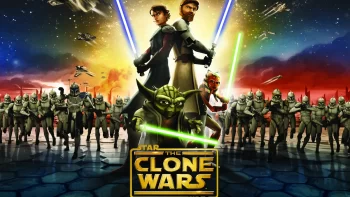 Star Wars Rebels was a really good series with a lot of lore added into the saga. I had seen a few episodes here and there of The Clone Wars, as well as a couple Bad Batch episodes. Clone Wars is my son’s favorite animated series in any genre: and he likes a lot of them. I decided to watch it from start to finish in an attempt to relate better to my teenager (good luck with that – I know).
Star Wars Rebels was a really good series with a lot of lore added into the saga. I had seen a few episodes here and there of The Clone Wars, as well as a couple Bad Batch episodes. Clone Wars is my son’s favorite animated series in any genre: and he likes a lot of them. I decided to watch it from start to finish in an attempt to relate better to my teenager (good luck with that – I know).
Man, this is a terrific series. Love all the lore added/expanded on; the visual style; the action scenes: it’s all excellent. Episodes are a bit less than 25 minutes I think, and easy to binge in small numbers. I’m into season two (there are seven seasons and one hundred thirty three episodes) and while I still find Jar Jar annoying as hell, I like everything about this series. The light saber fights are really cool.
If you like the Star Wars universe and haven’t seen this show yet, you are definitely missing out – like I was. And the Bad Batch was introduced near the end of the original show, and it’s a spin-off series you can follow up with.
There’s a Clone Wars ninety-minute movie that takes place right before the first episode of the Clone Wars series. It introduces Asohka as a padawan. I watched it after watching season one. That didn’t affect anything, and it’s definitely worth watching.
Highly recommend Clone Wars. And if you haven’t seen Rebels, it fills in some of the gap leading right up to the start of the first movie. And, the live-action Asohka series picked up the Rebels story line. Very recommended.
4 – Robert E. Howard Continues to Enthrall Me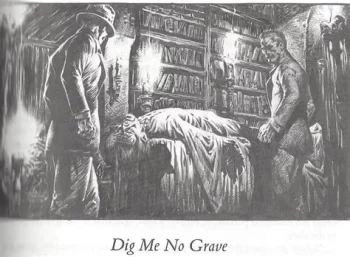 John D. MacDonald remains my favorite writer of all time – any genre. I’m overdue for another dive into his short novels, but that’s just not on tap at present. However, I am continuing to read and re-read my second-favorite: the pride of Cross Plains.
John D. MacDonald remains my favorite writer of all time – any genre. I’m overdue for another dive into his short novels, but that’s just not on tap at present. However, I am continuing to read and re-read my second-favorite: the pride of Cross Plains.
I’ve got the third and final Kirby O’Donnell post coming for the Summer Pulp series (there were only three stories). I’m sure 2026 will see me ruminating on the one Steve Clarney story. But as I re-read “The Curse of the Crimson God,” as always, I was in awe of Howard’s writing skill. His prose is fantastic. He writes battle as well as anyone I’ve discovered. But his use of words, relentless pacing, and facility for spellbinding the reader, feels fresh every time.
I have a post on his occult detectives, Conrad and Kirowan, ready for the Summer. Horror is not my thing, but Howard was a master in that genre, as well. My love of MacDonald goes back more than forty years – he was a master. But Robert E. Howard may be unequaled at what he wrote. Even the prose in his Conan stories rises above the common perception of Pulp, and sword and sorcery. I may not love every story he wrote, but I am rarely disappointed in the writing (Breckenridge Elkins is totally an exception).
If you haven’t discovered REH – or only know Conan – get a couple volumes in the fantastic Del Rey series (they used the original unedited texts) and discover a true American treasure.
Not 5 –I wanted the fifth item to be me praising the terrific documentary, Welcome To Wrehxam. Ryan Reynolds and Rob McElhenney bought the Welsh soccer (football) club in Wrexham, in 2001. The whole thing has been covered in a wonderful documentary. The first episodes of season four dropped earlier this month. I’m not caught up yet.
But it is SO watchable. The owners, the team, the staff, and the town – you will get invested in all of them. The boys have (sometimes painfully) plugged in a lot of cash, and reaped ongoing success. Ryan and Rob are really fun and likable guys.
I’ll talk about Wrexham in a future What I’m Watching installment.
Prior Ten Things I Think I Think
Six Things I Think I Think (March 2025)
Ten Things I Think I Think (January 2025)
Ten Things I Think I Think (December 2024)
Nine Things I Think I Think (October 2024)
Five More Things I Think: Marvel Edition (September 2024)
Ten Things I Think I Think: Marvel Edition ( September 2024)
Five Things I Think I Think (January 2024)
Seven Things I Think I Think (December 2023)
Talking Tolkien: TenThings I Think I Think (August 2023)
A (Black) Gat in the Hand: Ten Things I Think I think (August 2023)
5 More Things I Think (March 2023)
10 Things I Think I Think (March 2023)

Bob Byrne’s ‘A (Black) Gat in the Hand’ made its Black Gate debut in 2018 and has returned every summer since.
His ‘The Public Life of Sherlock Holmes’ column ran every Monday morning at Black Gate from March, 2014 through March, 2017. And he irregularly posts on Rex Stout’s gargantuan detective in ‘Nero Wolfe’s Brownstone.’ He is a member of the Praed Street Irregulars, founded www.SolarPons.com (the only website dedicated to the ‘Sherlock Holmes of Praed Street’).
He organized Black Gate’s award-nominated ‘Discovering Robert E. Howard’ series, as well as the award-winning ‘Hither Came Conan’ series. Which is now part of THE Definitive guide to Conan. He also organized 2023’s ‘Talking Tolkien.’
He has contributed stories to The MX Book of New Sherlock Holmes Stories — Parts III, IV, V, VI, XXI, and XXXIII.
He has written introductions for Steeger Books, and appeared in several magazines, including Black Mask, Sherlock Holmes Mystery Magazine, The Strand Magazine, and Sherlock Magazine.
You can definitely ‘experience the Bobness’ at Jason Waltz’s ’24? in 42′ podcast.
When Satire is Overwhelmed by Reality: Moon Missing: Edward Sorel’s Report on Future Events
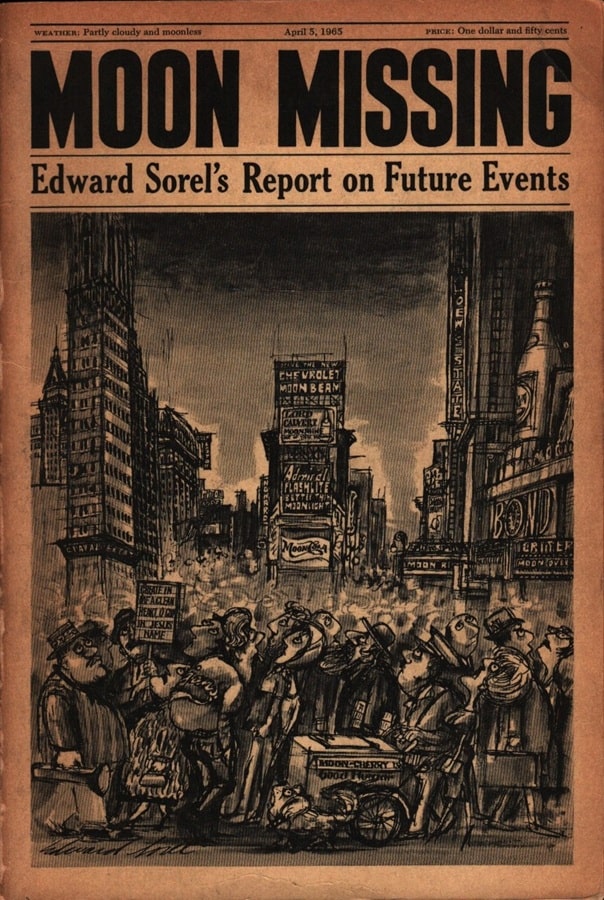 Moon Missing (1962)
Moon Missing (1962)
At about 1:46 am EST in the middle of the American night of April 4, 1965 the Moon disappeared. The American people were informed the next day at a Presidential news conference. President Kennedy was in no way responsible, said Allen Dulles, disgraced former CIA director but now Secretary of the Exterior, tapped to safeguard American interests in outer space.
Cartoonist, caricaturist, satirist Edward Sorel published Moon Missing in 1962. He had no need to prognosticate the future; the world around him gave him all the ammunition his ink Speedball B6 required.
So insistent are we today that the early Sixties were a more innocent time that the reality of the fear, paranoia, tension, and general unhappiness of the era can only be exhumed from period pieces. Sorel’s vision of the craziness ready to be let loose by a global event relied heavily on contemporary names in the news, but to find frighteningly many parallels in today’s world the names need only to be changed to modern equivalents.
 Edward Sorel in 1962
Edward Sorel in 1962
Born Edward Schwartz in 1929, Sorel found his artistic future while spending a year in bed as a child, much as young Richard Starkey found the drums as solace during a similar confinement. Still alive today and very much the Grand Old Man of caricature and cartoon satire with an endless catalog of important works, Sorel was a struggling freelancer in 1962. His early books for adults were such failures that even his own website doesn’t bother to mention them. To supplement the advertising work he was building a reputation for, he sent his satires out to every magazine that would accept such heresy, keeping his name before the public.
Moon Missing was excerpted in the motley foursome of Horizon, Sports Illustrated, Show Magazine, and Caterpillar. Caterpillar? Since the avant garde The Caterpillar Magazine didn’t debut until 1967 and the children’s magazine of that name was far in the future, I am forced to conclude he meant Caterpillar News and Views, the house magazine of the bulldozer giant. To imagine the improbability of that Venn diagram, try to conjure an appearance by R. Crumb in IBM’s THINK magazine. My brain boggles.
Moon Missing is set as a series of brief daily newspaper reports from the alternate future of 1965, the foundation Sorel uses for his plethora of illustrations. The double-page below sets the tone. New Yorkers parade down the sidewalk, oblivious to all but their smartphones – I mean, newspapers – while the news ticker accuses the Communists for the disappearance.
First to react is the Gallup Poll. The public is eternally divided on all issues.
And politicians are eternally hypocrites.
Clueless politicians can be found in every era, but the sweetener here is the reminder that J. Edgar Hoover used the FBI as a personal internal police, a part of the past we should never want revisited. “Involves national security.” Ring any recent bells?
Every bit of today’s battle of right and left wings already existed in 1965.
So much commentary is packed into these two pages alone.
Lest you think Sorel was himself nothing more than a muddle-headed liberal, be assured that he applied his gimlet eye to the Kennedy administration as well.
Fortunately for the economy, capitalists will always find a way to cope.
As world tensions soar, Kennedy and Khrushchev meet and sign a Mutual Moon Aid Pact, and talk about complete disarmament. And then the worst possible news.
 Look at the date. July 4. If you were Khrushchev would you think that was a coincidence? Or would even Americans? So much for world peace.
Look at the date. July 4. If you were Khrushchev would you think that was a coincidence? Or would even Americans? So much for world peace.
And Sorel, the old advertising guy, can’t help but add a coda that triggers the memories of us graybeards.
The book should have been a bestseller. Unfortunately for Sorel’s career, Moon Missing was published on the first day of the sensational and long-lasting New York newspaper strike. Few events speak more to New York’s absolute cultural dominance over the country in the early sixties. All other media took their cues from the New York papers. Anything not reviewed there had little chance of notice, much less success, elsewhere. The rave review in the Tampa Tribune didn’t save it. Kennedy’s assassination the next year thoroughly destroyed any chance of a later revival; reading about a living Kennedy presidency in 1965 would be little more than a sick joke, sicker than the ones Sorel actually told. (The hard-luck Sorel later created a poster attacking the war-mongering Cardinal Spellman of New York, but it was released the day the cardinal died. Live by satire, die by irony.)
The good news is that in 1963 Sorel was named art director of Monocle, a magazine of savage political satire that matched his sensibilities perfectly. From there he went to Ramparts, New York, and the National Lampoon, and was discovered by more mainstream magazines, seldom disguising his disdain for all that was wrong with society and politics. For me he will always be indelibly etched in my memory for his nsfw drawing of a rockette line of nude world leaders covering their private parts with large erect rockets pointed at the rest of humanity. If you dare, search for Robert Scheer’s Thinking Tuna Fish, Talking Death: Essays on the Pornography of Power, the most perfect title for a Sorel cover ever devised.
ETA: I have a coda as well and it may be less believable than Sorel’s satire. We live in a time when satire is overwhelmed by reality. Only datelines can differentiate them. While writing this article my eye was caught by a report on American First Policy Institute ambassador Kambree Nelson. Nelson was invited to the White House’s “new media” press conference for influencers where she gained attention for a particularly softball question, leading the curious to check her history. They quickly discovered that in October 2024 she sent a Xitter out to her 625,000 followers: “Has anyone seen the moon lately? I’ve been looking for 7 days.” When even some of her followers told her that the moon was right up there, she replied. “It’s not out. None of my friends in 4 states can find it.”
Tom Lehrer once proclaimed, “Political satire became obsolete when Henry Kissinger was awarded the Nobel Peace Prize.” Ironically, both he and Edward Sorel have lived to see this brave new world. Irony may not be dead, but satire is limping with both feet.
Steve Carper is the author of hundreds of articles on fascinating, if obscure and forgotten, tidbits of history, as well as the seminal book Robots In American Popular Culture. All of his websites are linked at SteveCarper.com.
Tubi Dive, Part VII
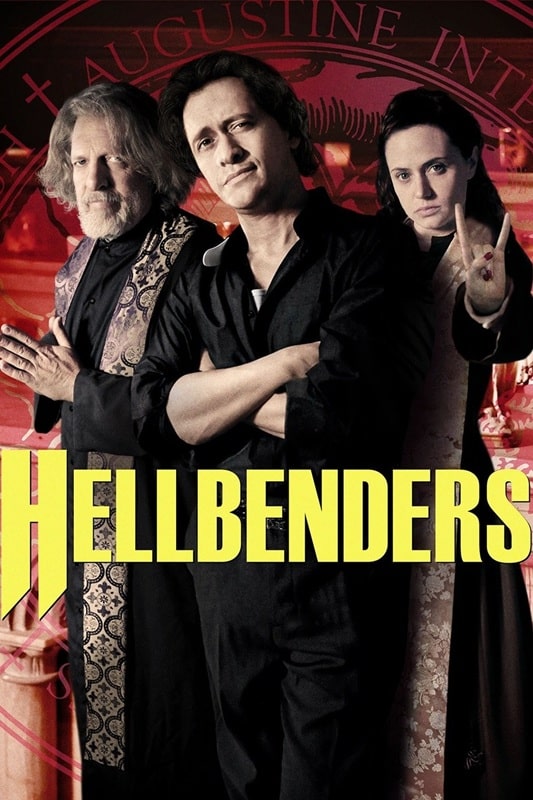 Hellbenders (Lionsgate, October 18, 2013)
Hellbenders (Lionsgate, October 18, 2013)
50 films that I dug up on Tubi.
Enjoy!
Hellbenders (2012)I really should have saved this for later, for my exorcism watch-a-thon What Possessed You, but the mere thought of not watching a Clancy Brown movie kicked off my hives.
Hellbenders is an unholy romp written and directed by J.T. Petty (who brought us The Burrowers, among others) based on the graphic novel of the same name.
It concerns a secret order of multi denominational priests who are trained to defeat unbeatable demons. They do this by sinning as much as possible, then inviting the demon to possess themselves before committing suicide and dragging the entity to Hell. It’s a fantastic premise, and the numerous references to their sins (ranging from stealing newspapers and having disparaging thoughts, to committing adultery and colourful blasphemy) is a lot of fun. Priests aren’t sent out on exorcism missions if they’re not guaranteed to go to Hell.
Clancy Brown plays Father Angus, the leader of this motley troop, and possibly the greatest user of profanity I have ever seen. This film is worth it for his swearing alone, but for God’s sake don’t do a drinking game based on the number of times he says cocksucker — you will die.
Everyone in this cast does a great job, and I especially enjoyed Dan Fogel as a punchy priest, and Stephen Gevedon as ‘Clint’ (a hilarious animated segment reveals why “Clint’ shouldn’t be a superhero name).
The possessions are fugly, the violence is daft and bloody, and there’s lots of biting off of appendages.
I really enjoyed this one.
9/10
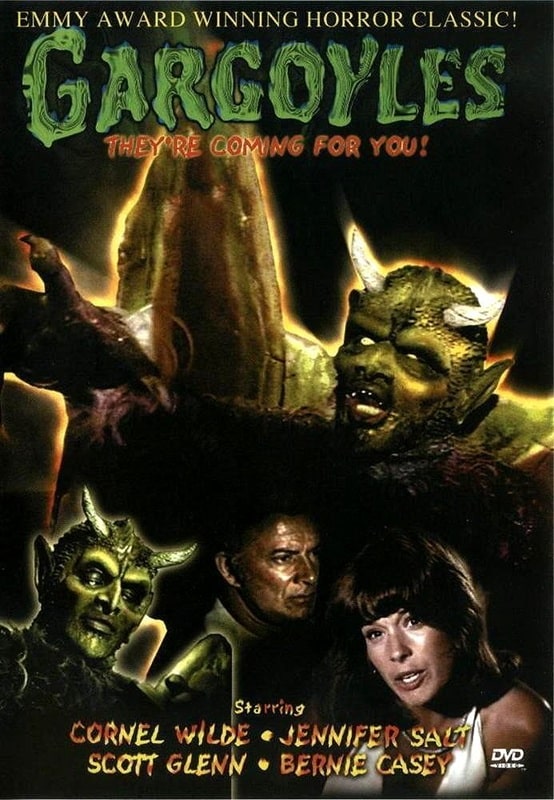
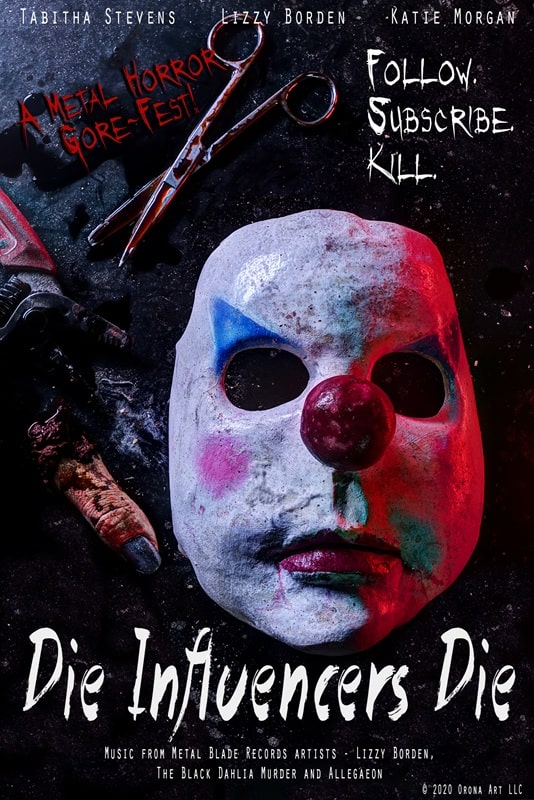
Gargoyles (CBS, November 12, 1972) and Die Influencers Die (Orona Art, 2020)
Don’t get excited, fans of the cartoon show (and potential Kenneth Branagh movie), this is a made for TV movie that was not bad for its time, and has developed something of a cult following.
Cornel Wilde and Jennifer Salt play Dr. Mercer Boley and his daughter, Diana. Dr. Boley is a leading authority on demonology, and his daughter feeds his obsession with trinkets she picks up around the world. They travel to a remote area in New Mexico called Devil’s Crossing — an area steeped in folklore and legend. There they encounter Uncle Willie, the owner of a roadside museum, who shows them a funky skeleton — before you know it, the gargoyles attack, and all hell breaks loose.
It’s a fairly tame flick, with a couple of slightly creepy moments, but the gargoyles don’t really stand up to scrutiny under the harsh lighting, and the action scenes are mostly choppy slow-motion. However, it licks along at a fair old pace, and it does feature Scott Glenn as a bad boy biker. You could say there’s an allegory blanketed under all of this regarding the treatment of indigenous peoples at the hands of settlers, but I ain’t here for no history lesson, mama.
Only recommended for the gargoyle-curious.
5/10
Die Influencers Die (2020)If you know me, there’s nothing I like more than seeing harm come to a) matadors, and b) internet pranksters, so this title obviously whetted my appetite.
Known in Germany as The Influencers, The (a Simpsons gag for loyal followers), this film is a low-budget schlock-fest with very little in the way of redeeming features. The nonsensical story concerns an abusive, toxic alpha-male influencer (a cross between Mr. Beast and Patrick Bateman) who wants to destroy the ‘careers’ of three rival influencers in order to ramp up his views. He does this by inviting them to a ‘haunted film studio’, then tries to give them dysentery with a made up energy drink that they are supposed to hawk for him. Little does he know that a malevolent demon is on site, and ready to chop up and eat anything in her path.
Said demon is the resurrected body of a model that was murdered by one of his assistants and stuffed in a fridge. She walks around at a jerky pace due to edited frames in a clown mask with duct taped nipples and a tutu. She’s apparently there for revenge, so why she kills the duped influencers (who did nothing to her) makes no sense. The whole thing is shot and edited like the most annoying music video you can think of, and is full of shock metal, partly due to the presence of Lizzy Borden as an illogical demon whisperer.
It’s annoying, grating and mean-spirited, and I can only recommend it to folks who like metal, plastic knockers and overacting.
3/10

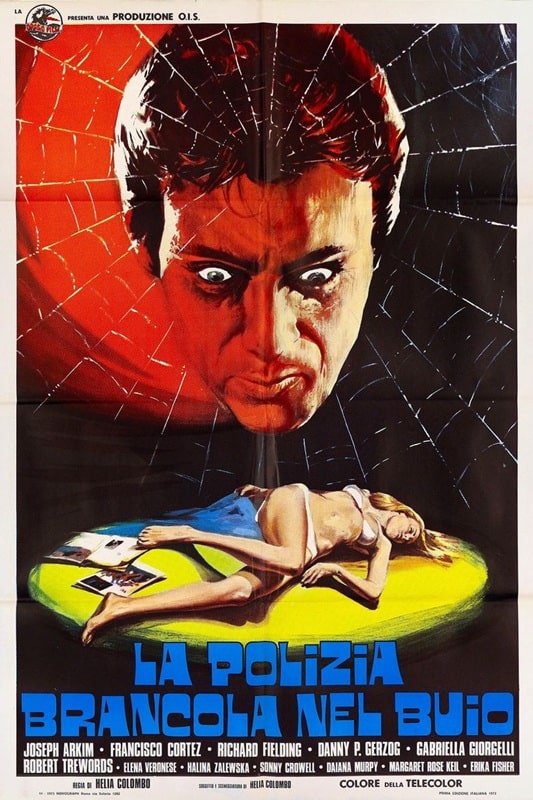
Monsternado (Uncork’d, November 14, 2023) and
The Police are Blundering in the Dark (O.I.S. Cinematografica, 1975)
Still on a kaiju high after Godzilla vs Kong, I foolishly tried to scratch my itch with this (potentially) fun flick. No sooner had it started, than I realized my mistake. It is an Uncork’d production.
Uncork’d makes The Asylum look like A24, but I bravely soldiered on.
Let’s get all the negativity out of the way. It’s not very good. The script is terrible, the acting is rubbish, and the effects are wonky at best.
I lied, here’s some more negativity. The thing that really irked me about this Sharknado knock-off was the filmmakers’ potential to do something really interesting with this idea. If you are going to have a plot reference mythical places like the Bermuda Triangle and Atlantis, then get some mythical monsters up in this windy shit.
As is, we are subjected to sharks, tentacles, gators, snakes, some token pterodactyls and aggressive scampi. If you’re going to spend the catering budget on CG, then at least make the monsters unique and fantastical.
I think it was supposed to take place in the US, but several shots of the Gherkin in downtown London, plus lots of dodgy American accents, gave up its true origins, and just keeping it set in England would have been a slight improvement.
It’s like I sometimes say to my children, “No, I’m not angry with you, just very disappointed.”
3/10
The Police are Blundering in the Dark (1975)Fancied a giallo, and this title caught my eye. It was originally titled The Salad Garden, and that would have made just as much sense, as there’s no actual coppers in this (ultimately rather dull) murder mystery.
The film has all the ingredients of a giallo, a POV killer dispatching young women, mandatory nudity, sexual repression, long talks around the dinner table, male hair product, but this one brings a science fiction twist to the proceedings. A wheelchair-bound photographer has invented a machine (the kind that goes wooo, woooo, and bathes the user in purple) that can photograph people’s thoughts — but this doesn’t really come into play until the end of the movie.
Instead we follow the apathetic investigation of a journalist looking for his missing friend while trying to pop the cherry of anyone he comes across. Being Italian and mid-70s, no one can be killed before their shirt has come off, in fact in the opening scene, the killer kindly tears his victim’s blouse so that she can gallop breastily through a copse before she becomes a corpse.
Possibly the most boring giallo I’ve ever watched, so I can only recommend it to fans of the Italian countryside, small cars, bosoms and lettuce.
4/10


Caddy Hack (Wild Eye Entertainment, December 10, 2023) and Blades (Troma Entertainment, 1989)
A double-bill, you lucky people. Here we have a pair of golf-related horror films that are on opposite ends of the quality spectrum.
Caddy Hack is bloody awful. It purports to be a comedy, but it is so desperately unfunny that I ended up hate-watching it for the final hour. The style of humor put me in mind of Mad Cow; self-referential, endlessly repeated (unfunny) jokes, deliberately rubbish effects, extreme mugging for the camera, horrible editing, and so on.
The story dispenses with the whole Caddy Shack plot, and instead focuses on the gophers, which in this steaming pile have been mutated by fertilizer. Throw in a Trumpy business owner, a thousand ‘ball’ jokes, and a Gremlins rip-off, and you have a recipe for a warm crap casserole. Avoid.
On the flip-side, Blades was an unexpected joy. I was honestly expecting a second-tier slasher featuring a lump of machinery, but I received a brilliant homage to Jaws, right down to the sound-alike music, story beats and set pieces. They played it straight, which elicited much more laughter from me than Caddy Hack, and a lot of thought was put into the direct adaptation of the original shark film. It gets better as the film goes on because you realize what’s coming up, and for this reason I wholeheartedly recommend Blades, especially for lovers of Jaws.
1/10 and 8/10 respectively.


Psycho Gothic Lolita (Pony Canyon, September 4, 2010) and Destroy All Neighbors (Shudder, January 12, 2024)
You did it! You’re about to read your 50th rubbish review of a film to be found in the bowels of Tubi!
It took me a while to settle on a final film. I started on Screecher of the Lagoon, but I’m tired of badly shot and acted efforts. I also started The Door in the Woods, but it was too serious for me to get into (I’ll return to it one day). So here we are.
Psycho Gothic Lolita (original title: Gothic & Lolita Psycho) sounded like a perfect fit. After all, I love psychos, I love ‘gothic’ and, um, I love psychos.
The film perfectly encapsulates the vibe of this entire watch-a-thon; bonkers action, extreme gore, body horror, dubious sexiness, and the sort of deadly umbrella that would make John Steed wet his pants.
It’s a revenge tale as old as time. Yuki’s mom is brutally killed by a gang of five ne’er-do-wells in black windbreakers, and so she dresses up as a ‘gothic Lolita’ (I just learned this is a thing) and exacts revenge Kill Bill style. Actually, there’s a lot of Kill Bill in this, right down to an eyepatch-sporting hit woman called ‘Elle’. There’s even a spoon-bender (who’s more proficient at lifting up skirts) called Yuro Gerao — which elicited a hearty guffaw from me.
It’s daft, bloody, and a heap of fun. A good way to go out.
8/10
Bonus Flick! Destroy All Neighbors (2024)Not a Tubi Dive (this is streaming on Shudder/Prime), this one is a deliriously fun throwback to the bonkers weird-a-thons of the 80s. Think Society, Brain Damage or Freaked.
Jonah (MST3K) Ray plays Will, a musician who just wants to finish his prog rock album. As he descends into madness, many unfortunate and bloody events occur, and he ends up in a world of wise-cracking corpses and insane riffs.
It’s obvious everyone is having a great time making this, and Alex Winter chews the scenery under 50lbs of rubber as an East-European nightmare, while Ray is an excellent straight man to the chaos. Daft, messy and entertaining.
8/10
Here are all 50 films I watched on Tubi, and my three favorites — a handy guide for purveyors of slop.
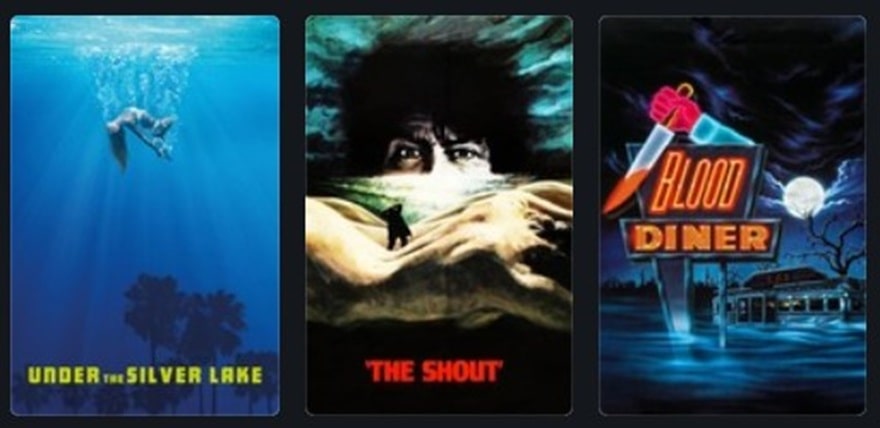 Tubi Dive — The Top Three
Tubi Dive — The Top Three
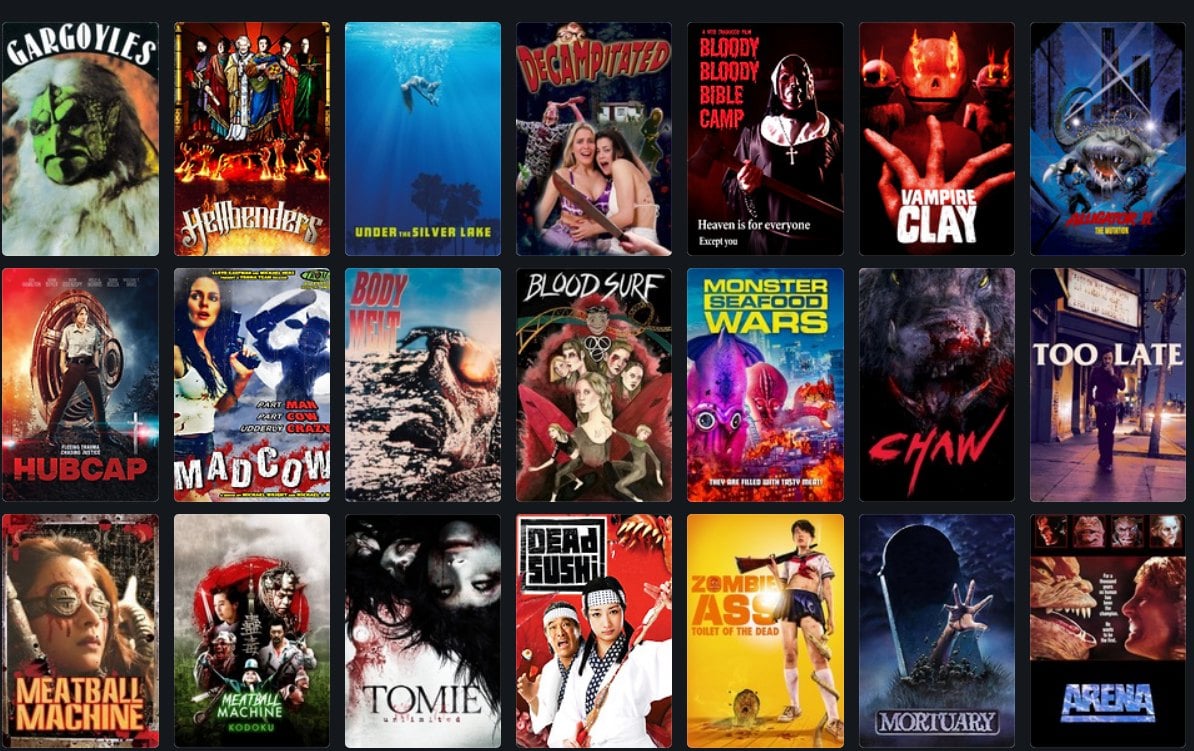 Tubi Dive 1
Tubi Dive 1
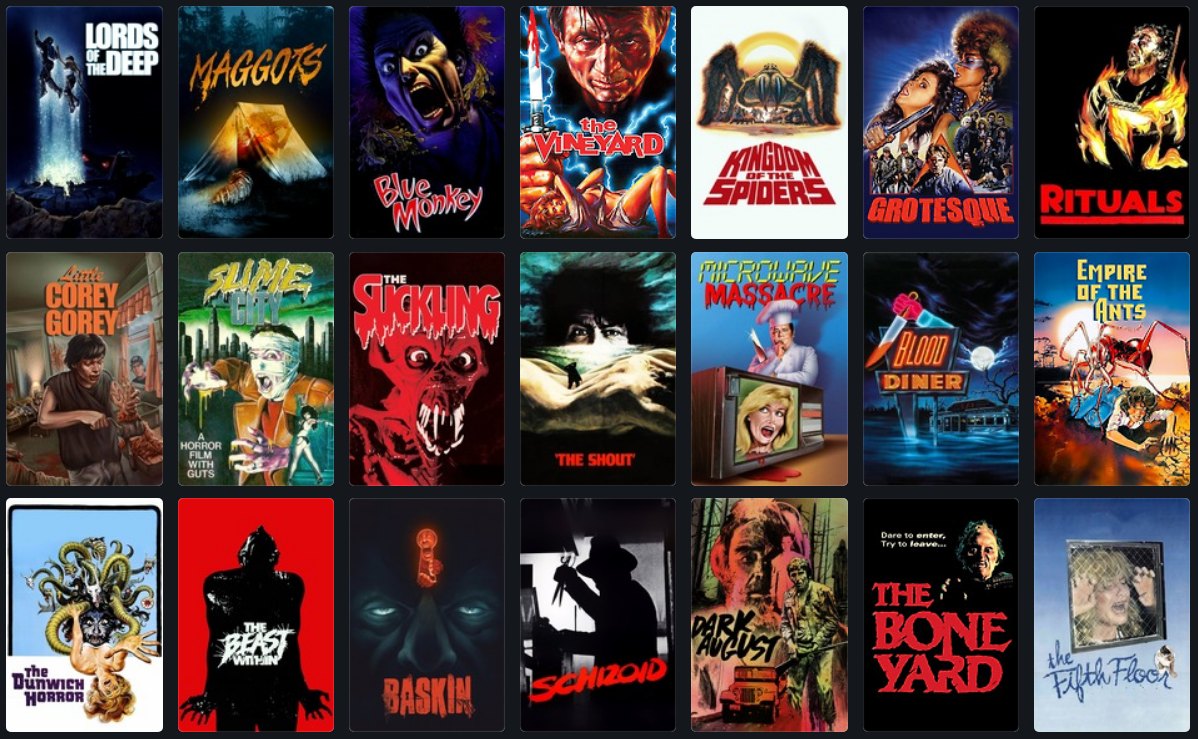 Tubi Dive 2
Tubi Dive 2
 Tubi Dive 3
Tubi Dive 3
Previous Murkey Movie surveys from Neil Baker include:
Tubi Dive, Part I
Tubi Dive, Part II
Tubi Dive, Part III
Tubi Dive, Part IV
Tubi Dive, Part V
Tubi Dive, Part VI
What Possessed You?
Fan of the Cave Bear
There, Wolves
What a Croc
Prehistrionics
Jumping the Shark
Alien Overlords
Biggus Footus
I Like Big Bugs and I Cannot Lie
The Weird, Weird West
Warrior Women Watch-a-thon
Neil Baker’s last article for us was Part VI of Tubi Dive. Neil spends his days watching dodgy movies, most of them terrible, in the hope that you might be inspired to watch them too. He is often asked why he doesn’t watch ‘proper’ films, and he honestly doesn’t have a good answer. He is an author, illustrator, teacher, and sculptor of turtle exhibits. (AprilMoonBooks.com).
In Their Prime – 5 Scary Novels from the 1970s You Must Read
You can find and buy the books we recommend at LitStack on Bookshop at LitStack…
The post In Their Prime – 5 Scary Novels from the 1970s You Must Read appeared first on LitStack.
Tor Doubles #7: James Tiptree Jr.’s The Girl Who Was Plugged In and Vonda N. McIntyre’s Screwtop
 Cover for Screwtop by Maren
Cover for Screwtop by MarenCover for The Girl Who Was Plugged In by Peter Gudynas
The seventh official volume of the Tor Doubles series offers two stories by women. Although the previous volume offered an excerpt from Gwyneth Jones’ novel Divine Endurance is addition to the selections from Barry B. Longyear and John Kessel, this is the first time women have provided the headlining stories in the series. James Tiptree, Jr.’s The Girl Who Was Plugged In and Vonda McIntyre’s Screwtop, both stories about women whose freedom was curtailed, are collected in this volume. As with the previous novel, this volume also includes an excerpt, in this case a three chapter piece from Ellen Kushner’s Swordspoint.
The Girl Who Was Plugged In was originally published in New Dimensions 3, edited by Robert Silverberg and published by Nelson Doubleday in October, 1973. It was nominated for the Hugo Award and the Nebula Award, winning the former.
James Tiptree, Jr. was a pseudonym for Alice B. Sheldon. Although known to be a pseudonym, it was long assumed that Tiptree was male, and Robert Silverberg, who edited this story before Tiptree’s real identity became known, famously declared “[i]t has been suggested that Tiptree is female, a theory that I find absurd, for there is to me something ineluctably masculine about Tiptree’s writing. The truth of Tiptree’s identity was revealed in 1977. The Girl Who Was Plugged In is the first of three Tiptree stories to be published in the Tor Doubles series.
Reading The Girl Who Was Plugged In in 2025, offers a very different experience from reading it when it was initially published in 1973 or reprinted as part of the Tor Double series in 1989. Although it seems clear that there was a satiric element in this when it was initially published, this it is one of those rare pieces of science fiction which looks prophetic in retrospect. The situation Tiptree described has come, in part, to pass.
Set at an indeterminate point in the future, Tiptree postulates a world in which advertising is illegal. Her story focuses on a young woman named P. Burke, who suffers from pituitary dystrophy, a disease which leaves her disfigured and, as Tiptree makes sure the reader understands, seem like a monster. Following a failed suicide attempt, Burke is placed into essentially a VR chamber and hooked up so she can manipulate a remote body, which becomes known as Delphi.
Delphi is designed to be an attractive woman and work as what we would now call an influencer. Her sole purpose is to be seen, make headlines, and have people wondering what clothing she’s wearing, what products she’s using, and where they might be able to purchase them.
Tiptree’s story is narrated by an unidentified voice who describes the way the world treats Delphi and her adventures mixed with the way the scientists who care for an manipulate P. Burke’s body and inputs. The narrative choice puts a distance between the reader and the characters, which serves to reinforce the isolation P. Burke is in and the faux reality through which Delphi moves, even as she finds herself in a relationship with playboy Paul Isham, who completely misunderstands the situation. As Isham falls in love with the Delphi he perceives, P. Burke, in her isolation chamber, is unable to separate the reality of her situation with the idea that Paul really sees and loves her and she falls in love with him.
Isham realizes something is wrong about the situation and he manages to figure out where the lab P. Burke is being held is located. Despite his failure to comprehend Delphi’s true nature, he attempts to rescue her from the clutches of the scientists who are holding her, resulting in a less than happy ending for nearly all of the story’s characters.
The Girl Who Was Plugged In offers a world of influencers and controllers. Delphi way be the influencer the world sees, but her content is provided by P. Burke, who remains hidden from Delphi’s adoring fans. As the story progresses, the language used to describe P. Burke becomes more and more harsh, removing layer after layer of her humanity. In the end, it is neither the consumer, the influencer, or the reality behind the influencer that benefits from the situation, but rather the powers the set up the situation, making The Girl Who Was Plugged In a cautionary tale for a world that didn’t exist when the story was originally written and published.
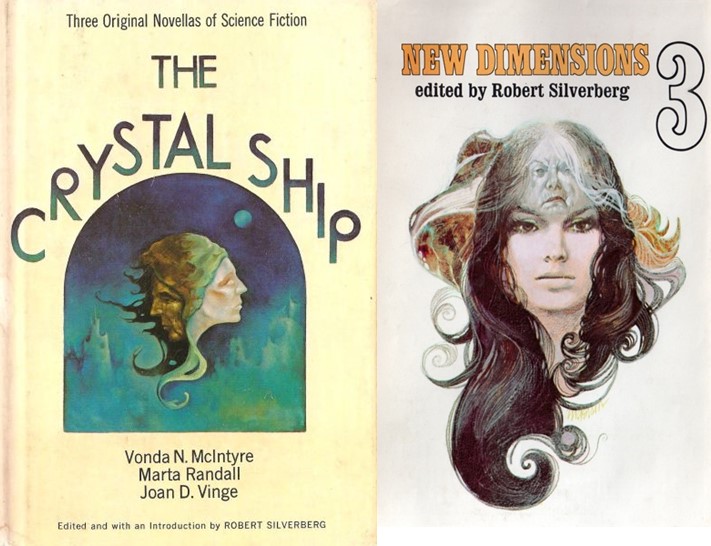 The Crystal Ship cover by Mike Mariano
The Crystal Ship cover by Mike MarianoNew Dimensions cover by Dennis Anderson
Screwtop was originally published in the anthology The Crystal Ship, edited by Robert Silverberg and published by Thomas Nelson in September, 1976.
Kylis is a spaceport rat, essentially a professional interstellar stowaway. A visit to the planet Redsun, however, ended her traveling days as she has been arrested and sentenced to penal labor at the Screwtop prison camp. Kylis strikes up a friendship, and eventually forms a family, with two other prisoners, Gryf and Jason, both of whom appear to be natives of Redsun.
Gryf is the product of tetraparents, a genetically crafted person who has the DNA of four separate parents. Meant to be highly intelligent, a glitch in the combination of DNA meant that he came out with strange coloring that set him apart from people. Gryf was also aware of Jason’s identity as a major philosophical author, which he shared with Kylis, although asking her not to let Jason know that they knew.
Focusing on Kylis, McIntyre depicts the horrors of the work camp. The throuple forced to the schedule set for them by the powers that be, represented in the camp by a guard called the Lizard. When their time allows it, they can seek solace in each other and form a family for themselves. This time almost makes their shifts working bearable.
The work is difficult. Screwtop is located on Redsun’s southern continent, which appears to be an uninhabited wilderness. Their job is to mine for geothermal energy, which is used to power the more massive and populated northern continent, where Gryf, Jason, and the majority of the prisoners are from. Naturally humid and hot, the mining process is even hotter and dangerous if precautions aren’t taken.
Once McIntyre establishes her setting and the characters’ relationships to each other, she is able to more fully explore the dynamics of the prison. Kylis reaches out to another woman prisoner, Miria, in a manner which may cause undue attention to be brought to her group. The Lizard approaches Kylis to extort not only sexual favors, but the implicit desire to have a child by her. The strength and purpose being in a supportive relationship with Gryf and Jason is demonstrated to have negative implications and it can be used against them.
In many ways, Screwtop feels as if it could be a prison story set anywhere, without the need for the science fictional elements. Kylis could merely be a runaway, Jason a dissident, and the workforce a regular mine. However, Gryf’s situation as the product of tetraparents becomes an important plot point. Although not fully explored, partly due to Kylis’s role as a narrator, his science fictional origin and upbringing, and his rebellion against it, focuses the story in him in the later pages as it becomes clear that his parents know of his whereabouts and may have the wherewithal to affect his release. More importantly, his way of dealing with the reality in which he finds himself is based on his unique situation.
Both Screwtop and The Girl Who Plugged In focuses on individuals who are trapped by other people, Kylis has more agency that P. Burke and the relationship Kylis has with Gryf and Jason, although not based entirely on reality of knowledge of the others, is a more authentic relationship than the one between Isham and Delphi. Similarly, McIntyre does not place a distance between the story and the reader by the expedient of having her narrator a participant rather than an observer.
The cover for Screwtop was painted by Maren. The cover for The Girl Who Was Plugged In was painted by Peter Gudynas. At only 136 pages, this volume is the shortest in the Tor Double series.
 Steven H Silver is a twenty-one-time Hugo Award nominee and was the publisher of the Hugo-nominated fanzine Argentus as well as the editor and publisher of ISFiC Press for eight years. He has also edited books for DAW, NESFA Press, and ZNB. His most recent anthology is Alternate Peace and his novel After Hastings was published in 2020. Steven has chaired the first Midwest Construction, Windycon three times, and the SFWA Nebula Conference numerous times. He was programming chair for Chicon 2000 and Vice Chair of Chicon 7.
Steven H Silver is a twenty-one-time Hugo Award nominee and was the publisher of the Hugo-nominated fanzine Argentus as well as the editor and publisher of ISFiC Press for eight years. He has also edited books for DAW, NESFA Press, and ZNB. His most recent anthology is Alternate Peace and his novel After Hastings was published in 2020. Steven has chaired the first Midwest Construction, Windycon three times, and the SFWA Nebula Conference numerous times. He was programming chair for Chicon 2000 and Vice Chair of Chicon 7.
Book Review: The Knight and the Moth by Rachel Gillig
I received a review copy from the publisher. This does not affect the contents of my review and all opinions are my own.
 The Knight and the Moth by Rachel Gillig
The Knight and the Moth by Rachel Gillig
Mogsy’s Rating: 4.5 of 5 stars
Genre: Fantasy
Series: Book 1 of The Stonewater Kingdom
Publisher: Orbit (May 20, 2025)
Length: 400 pages
Author Information: Website | Twitter
I confess I had my doubts when I started this one. After all, my first experience with Rachel Gillig’s work, One Dark Window, was not the most positive. That book left me cold with its confused themes and scattered direction, yet the author’s strong writing and the premise of her latest novel intrigued me enough to give her another shot—and I’m glad I did. The Knight and the Moth delivered a beautiful story that features a clearer narrative, compelling characters, and a gothic romantic tone that simply clicked with me in a way her previous series hadn’t.
The novel opens by transporting readers to the haunting, isolated grounds of Aisling Cathedral, where six nameless girls have served as Diviners ever since being rescued as foundlings by the abbess. Revered as soothsayers, Diviners undergo a dangerous water ritual to interpret the future from visions received through dreams induced while they are nearly drowned. Among them is Number Six, once known as Sybil Delling, a young woman who has spent nearly the past decade enduring this process for the benefit of those traveling to Aisling seeking wisdom. Now nearing the end of her service, she and her five sister Diviners are looking forward to their lives of freedom once they leave the cathedral, until an unexpected visit from the “Boy King” Benedict Castor III throws everything into chaos.
Benedict, newly crowned and still in his late teens, has come for a reading to see what lies ahead for his reign. Among his retinue is his loyal knight, Rodrick “Rory” Myndacious, whose open contempt for the Diviners’ rituals immediately grates on Six. Her suspicion proves justified when she catches the king and Rory stealing water from the cathedral’s sacred spring, but instead of turning them in, she strikes a deal: in exchange for her silence, they must take the Diviners out on the town for one final night of revelry before their time at Aisling ends. Yet soon after this outing, things take a darker turn when the Diviners start disappearing, one by one. Fearing that something far more sinister is at work, Six flees the cathedral with Rory’s help, hoping to buy some time while she works to locate her missing friends.
Although romantasy is arguably its main selling point, where The Knight and the Moth truly stood out was in its immersive atmosphere and world-building which felt both eerie and mythical. The setting of Aisling Cathedral, where the Diviners are cloistered, is one that casts a gothic shadow over the early chapters, with its abbess and cryptic rituals shrouded in secrecy. The young women, who go by their numbers One to Six, have had their identities erased and their eyes covered, the better to train them to a life of obedience and reading the Omens. Besides each other, they only have the cathedral’s sentient gargoyles for companionship. But as if all this weren’t intriguing enough, it’s the hints of an even deeper magical ecosystem that intrigued me, particularly the supernatural creatures called sprites that populate the world. Though their appearances were brief, they added a wild, almost elemental energy to the setting, and I hope their lore will be further explored in the next installment.
With regards to the romance, the relationship between Six—AKA Sybil—and Rory is one that simmers quietly in the background while the story’s main events play out, and that’s just the way I like it. Not too slow and yet not so strong that it overwhelms the central plotline, it unfolds with natural chemistry between the two characters. Not quite a “hate to love” romance, theirs is a dynamic which begins with mutual disdain but gradually shifts into something more intimate and vulnerable, and while the sparks don’t fly right away, by the time they do, the emotional payoff is worth the wait.
I also want to note how rare it is to find a book where the side characters shine just as brightly as the protagonists. Sure, Sybil and Rory are the ones who carry the story, but in The Knight and the Moth, we have a supporting cast that’s every bit as unforgettable. Maude, an older knight who serves as both mentor and near-maternal figure to Benedict and Rory, steals every scene she’s in with her quiet competence and unwavering composure—grace that she even extends to Sybil. On his part, Benedict, or Benji to his friends, reveals he is so much more than his youth, displaying surprising depth while he struggles to live up to a crown he barely understands. And then there’s the gargoyle, Sybil’s childlike guardian who follows her from the cathedral and becomes equal parts comic relief and emotional anchor. Together, this group of characters create a rich network of relationships that elevate this novel far beyond a simple romantasy.
In sum, what a huge difference from my first run with Rachel Gillig! Where One Dark Window gave me the impression of stumbling around in the dark, The Knight and the Moth felt more like a confident step forward. Featuring themes that were more focused, characters who were more grounded, and a more memorable story overall, the book managed to balance atmosphere, mystery, and heart without losing its way. For readers who enjoy slow-burn character arcs and layered world-building with just a touch of gothic romance, this is an easy recommendation. I’m genuinely excited to see where this series goes next.
![]()
![]()
The Suspension Bridges of Disbelief
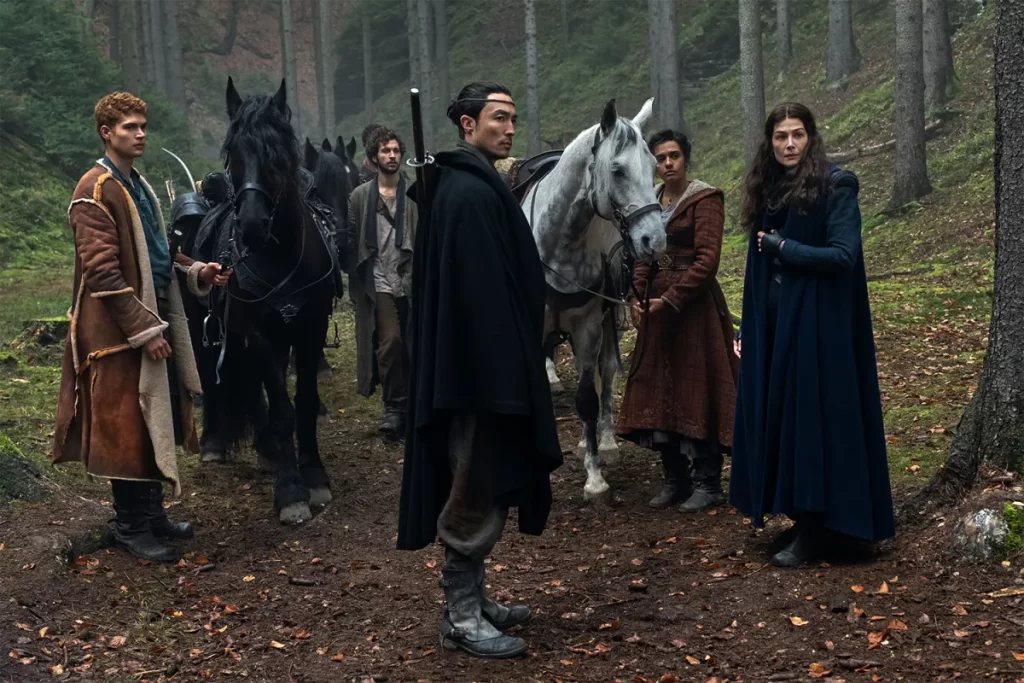 A friend and I have been watching The Wheel of Time adaptation on Amazon. Both of us expressed surprise not at the open casting, which we agree is wonderful, but at how that production choice plays out in small hamlets like Rand al’Thor’s “home town” of Two Rivers. After observing that every possible racial group is represented in this isolated, insular mountain community, my friend had an epiphany.
A friend and I have been watching The Wheel of Time adaptation on Amazon. Both of us expressed surprise not at the open casting, which we agree is wonderful, but at how that production choice plays out in small hamlets like Rand al’Thor’s “home town” of Two Rivers. After observing that every possible racial group is represented in this isolated, insular mountain community, my friend had an epiphany.
“I had to remind myself,” said my friend, “that if I suspend disbelief to accept that there’s magic in this world, then I might also have to suspend my disbelief in genetics.”
But isn’t it curious, how difficult this can be? The addition of magic in the Robert Jordan universe does not imply the generalized suspension of basic science, but the casting choices made in populating the Two Rivers absolutely does. Surely, under normal conditions, a group of people who initially look very different and then happily intermingle and intermarry over several generations would soon produce a population exhibiting mostly blended rather than outlying traits?
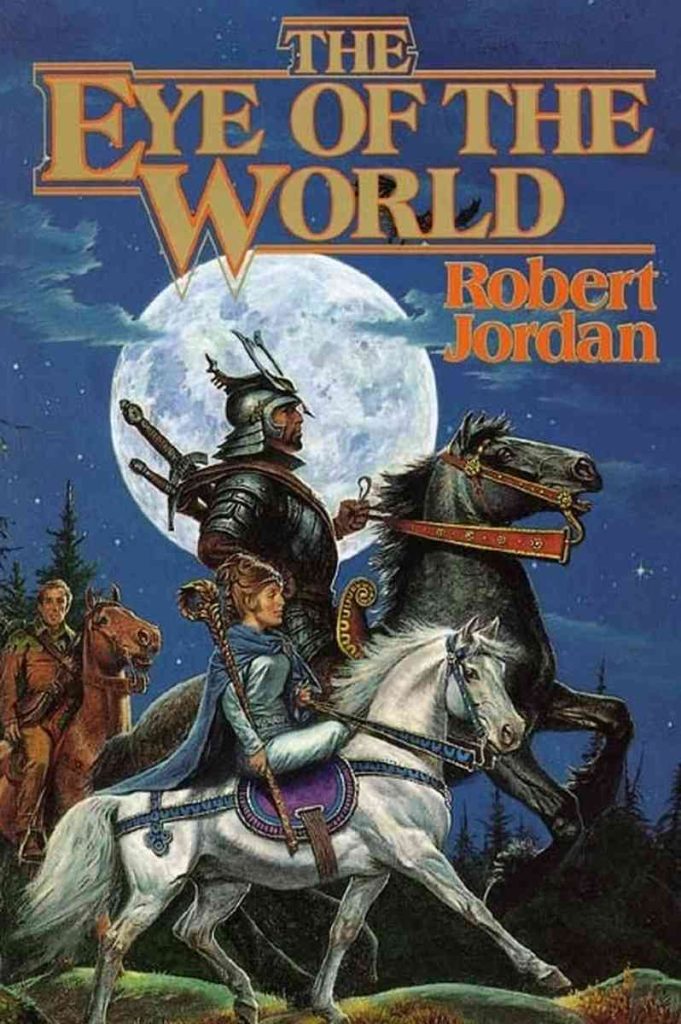 So, if genetics is getting tossed out the window, what’s next? Photosynthesis? The electron constant? Algebra?
So, if genetics is getting tossed out the window, what’s next? Photosynthesis? The electron constant? Algebra?
I once had a housemate who professed a hatred of musicals, both on stage and on film. He explained that he simply couldn’t get around the idea that when people feel a ton of emotion, they break into song. I thought (but did not quite say) that that’s exactly when people are most likely to spontaneously burst into song.
 Pro or con, musicals mark another instance where we either go along for the ride, suspending our disbelief when our heroes start warbling and trilling –– also when a brass band kicks in out of nowhere, playing (let’s say) “Seventy-Six Trombones”––or we cross our arms, huff and puff, and complain that musicals “aren’t realistic.”
Pro or con, musicals mark another instance where we either go along for the ride, suspending our disbelief when our heroes start warbling and trilling –– also when a brass band kicks in out of nowhere, playing (let’s say) “Seventy-Six Trombones”––or we cross our arms, huff and puff, and complain that musicals “aren’t realistic.”
But what is? Howard Shore’s exceptional score for The Lord of the Rings has nothing to do with realism. The Fellowship of the Ring is not accompanied on its journey by a traveling orchestra –– and if it were, wouldn’t we throw up our hands and declare the film to be entirely unbelievable?
 The easiest stunt to pull off when requiring readers or viewers to freeze-frame their disbelief is to offer up only a single element that’s not of this world. Lorrie Moore does exactly this in I Am Homeless if This is Not My Home (winner of the 2023 National Book Critics Circle Award) by asking us to accept that her hero’s deceased ex-girlfriend might want to embark on one final post-mortem road trip, bantering like a boss all the way. Everything else (well, almost everything else) is essentially normal, right down to the tarmac, the songs on the radio, and said girlfriend’s steady rate of decay.
The easiest stunt to pull off when requiring readers or viewers to freeze-frame their disbelief is to offer up only a single element that’s not of this world. Lorrie Moore does exactly this in I Am Homeless if This is Not My Home (winner of the 2023 National Book Critics Circle Award) by asking us to accept that her hero’s deceased ex-girlfriend might want to embark on one final post-mortem road trip, bantering like a boss all the way. Everything else (well, almost everything else) is essentially normal, right down to the tarmac, the songs on the radio, and said girlfriend’s steady rate of decay.
 Sometimes, one encounters a writer who appears to be sticking to the world as it is, but elements of dream or otherness are allowed to intrude, often with unpredictable results. The reader is themselves suspended, learning with every new-turned paged to be watchful, wary of what is real and what is not. Kathleen Jennings takes this approach in Flyaway, where disbelief is not so much suspended as it is actively cultivated. John Crowley’s Little, Big proceeds in much the same fashion.
Sometimes, one encounters a writer who appears to be sticking to the world as it is, but elements of dream or otherness are allowed to intrude, often with unpredictable results. The reader is themselves suspended, learning with every new-turned paged to be watchful, wary of what is real and what is not. Kathleen Jennings takes this approach in Flyaway, where disbelief is not so much suspended as it is actively cultivated. John Crowley’s Little, Big proceeds in much the same fashion.
But in general, suspension of disbelief works best in an additive sense. The story-teller allows for some new power, something that piggy-backs on the world already known. For example, in The Fifth Season, N.K. Jemisin allows for “orogenes” who control stone, a supernatural power built on what we already accept of geology and plate tectonics. Similarly, in Marvel Comics lore, the character known as Storm can control wind and weather –– but her powers depend explicitly on phenomena with which we are already familiar.
 Even the finest works of the fantastic have their awkward moments. In HBO’s Game of Thrones, there’s a scene in which the Onion Knight, Ser Davos Seaworth, breaks young Gendry out of prison and sets him in a rowboat. When Gendry faces the wrong way, Ser Davos asks, “Have you ever been in a boat?” and Gendry answers, “No,” but the very next moment, he’s feathering the oars like a pro. All I can do is shake my head. Rowboats require practice: you’re facing the wrong way while steering, and each oar (long and heavy) functions independently. In the ocean, as Gendry is, every single wave impacts the oars differently. I’m forced to say that, as written, this charming, comic scene swan dives right over the cliff of believability. If poor Gendry has never rowed, all the royal blood in the world won’t help him. He’ll never get past the breakers, much less to the supposed safety of some far and distant shore.
Even the finest works of the fantastic have their awkward moments. In HBO’s Game of Thrones, there’s a scene in which the Onion Knight, Ser Davos Seaworth, breaks young Gendry out of prison and sets him in a rowboat. When Gendry faces the wrong way, Ser Davos asks, “Have you ever been in a boat?” and Gendry answers, “No,” but the very next moment, he’s feathering the oars like a pro. All I can do is shake my head. Rowboats require practice: you’re facing the wrong way while steering, and each oar (long and heavy) functions independently. In the ocean, as Gendry is, every single wave impacts the oars differently. I’m forced to say that, as written, this charming, comic scene swan dives right over the cliff of believability. If poor Gendry has never rowed, all the royal blood in the world won’t help him. He’ll never get past the breakers, much less to the supposed safety of some far and distant shore.
And yet, I’m perfectly happy to believe in three-eyed ravens and the faceless men of Bravos.
 Perhaps the loftiest trick of all in the juggling game of disbelief is to remove some element that we have trouble imagining living without. Gravity, for example. The relative hardness and density of metal. Inertia. Strip away even one those three, and then try writing up a believable sword-fight. Good luck to ya’.
Perhaps the loftiest trick of all in the juggling game of disbelief is to remove some element that we have trouble imagining living without. Gravity, for example. The relative hardness and density of metal. Inertia. Strip away even one those three, and then try writing up a believable sword-fight. Good luck to ya’.
And this, perhaps, is why it is easier, when watching Amazon’s The Wheel of Time, to accept the One Power and way-gates and trollocs than it is to believe in a remote, mountainous outpost where the population covers just about every color of the human rainbow.
Magic, we buy (in part because it’s great fun to do so).
But reality?
Reality bites.
Onward.
Mark Rigney is a writer and long-time Black Gate blogger. His work on this site includes original fiction and perennially popular posts like “Adventures in Spellcraft: Rope Trick.” His new novel, Vinyl Wonderland, dropped on June 25th, 2024. Reviewer Rich Horton said of Vinyl Wonderland, “I was brought to tears, tears I trusted. A lovely work.” His favorite review quote so far comes from Instagram: “Holy crap on a cracker, it’s so good.” A preview post can be found HERE, while his website lives over THERE.
Spotlight on “The Will of the Many” by James Islington
In The Will of the Many, at the elite Catenan Academy, a young fugitive uncovers…
The post Spotlight on “The Will of the Many” by James Islington appeared first on LitStack.
Book Review: The Everlasting by Alex E. Harrow (by Swiff)

Book links: Tor Publishing Group | Goodreads
ABOUT THE AUTHOR: Alix E. Harrow is the Hugo Award winning author of The Ten Thousand Doors of January, The Once and Future Witches, and various short fiction. Her Fractured Fables series, beginning with the novella A Spindle Splintered, has been praised for its refreshing twist on familiar fairy tales. A former academic and adjunct, Harrow lives in Virginia with her husband and their two semi-feral kids.
Publisher: Tor Books (Expected October 2025)
Formats: Audiobook, ebook, paperback
REVIEW: The Everlasting is my favorite of Alix’s stories since the release of The Ten Thousand Doors of January. It is a love story told across a thousand years, again and again. It’s a story of ambition and ruthlessness, of bravery and cowardice, of servitude and freedom. It’s a lovely, emotional, and endearing read, showcasing Harrow’s wit and insightful observations common to her stories.
Told from an alternating second-person narrative (!) that echoes through time (!!), the story brings to mind Ken Grimwood’s classic Replay in all the best ways. Stories of this particular genre seem like they’d be especially difficult to execute, but Harrow does a remarkable job at harvesting all the seeds planted throughout the story.
I’m not going to divulge any further plot details as that would spoil some of the fun. Trust that the book is full of surprises and runs the full gamut of emotions, so prepare yourself for an immersive reading experience.
Sorry for cutting this short, but I have to go. If you need me, I’ll be waiting beneath the yew tree…


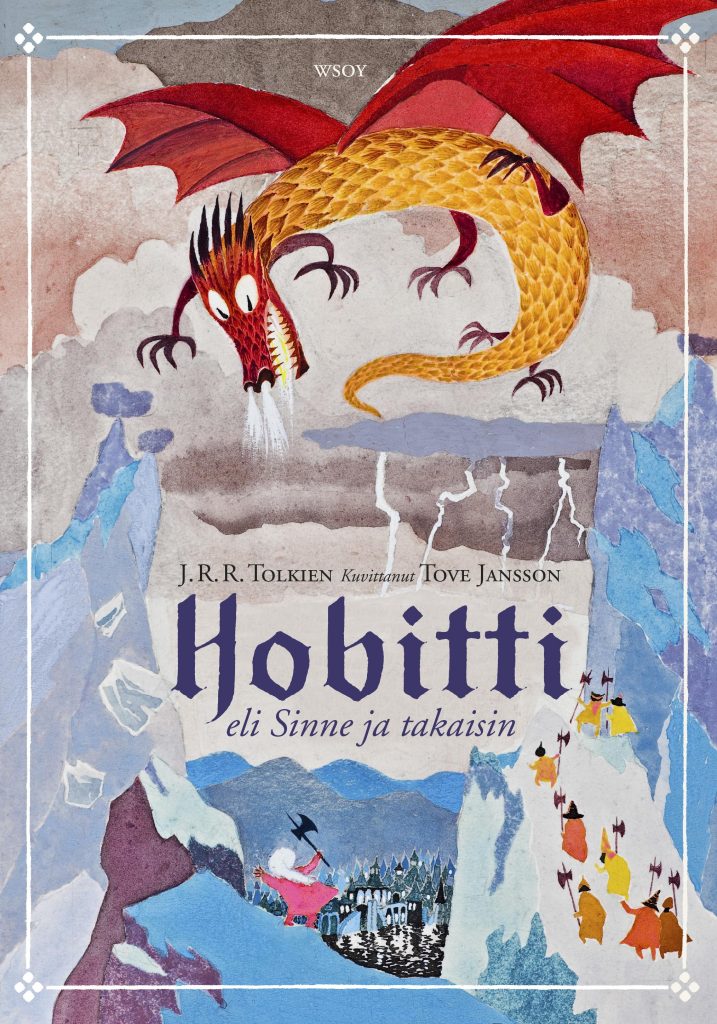






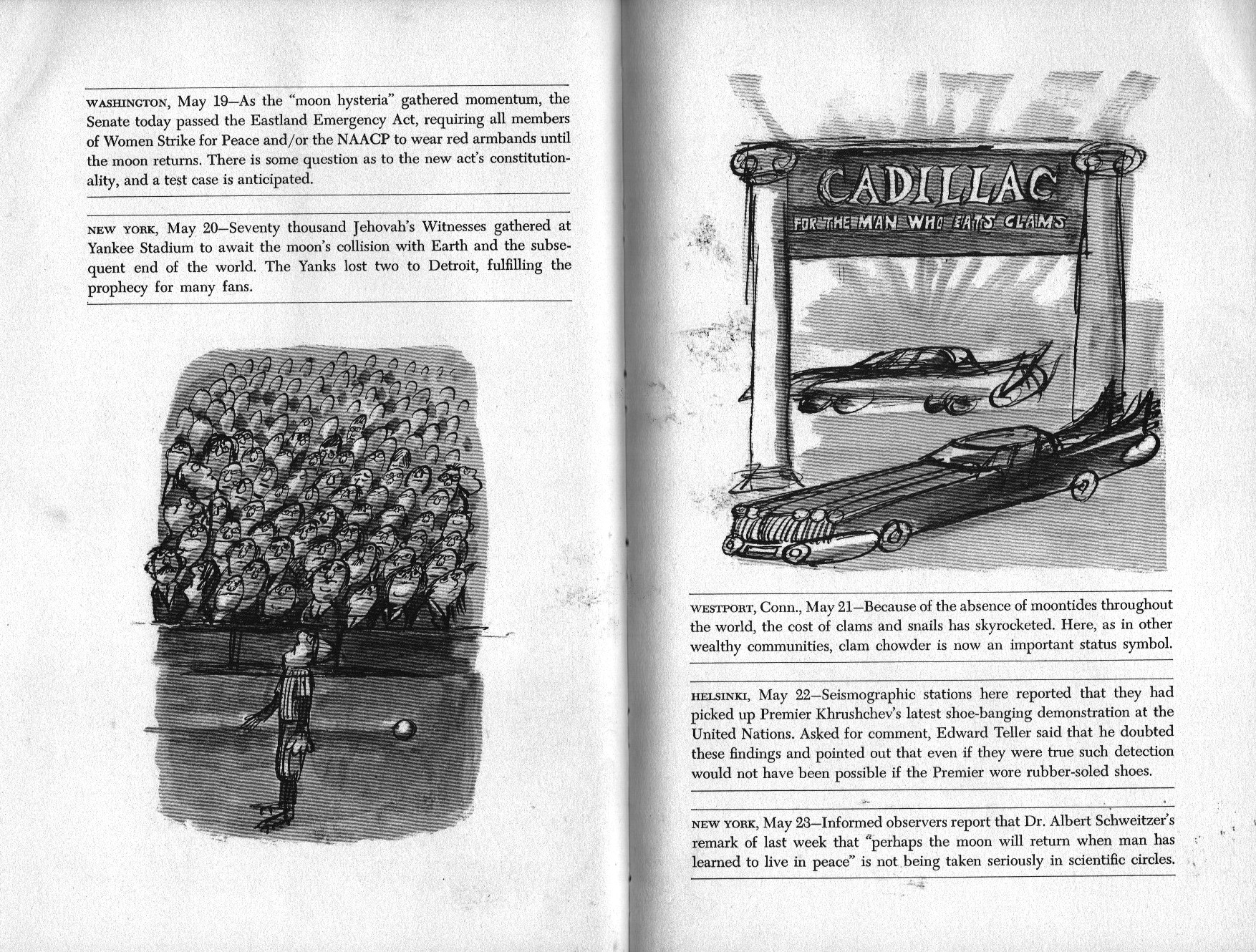
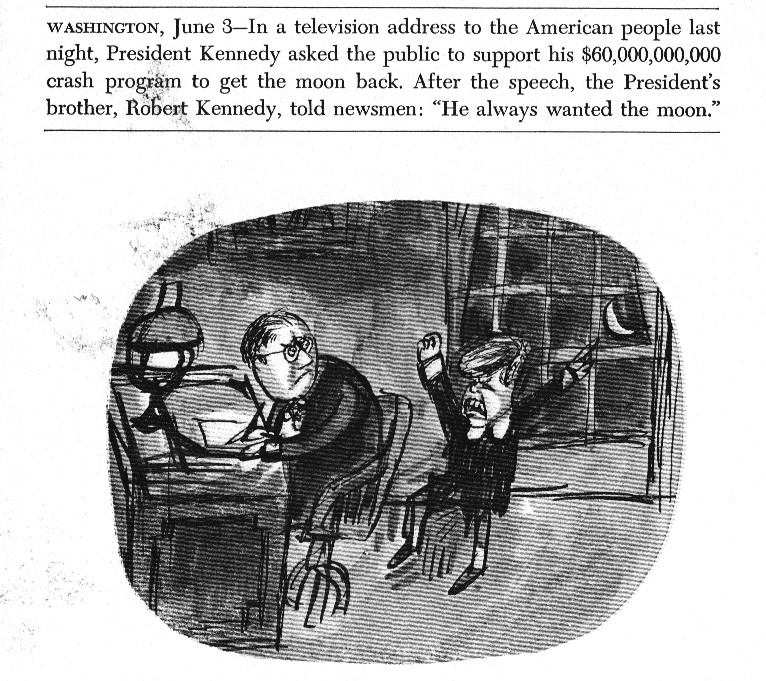
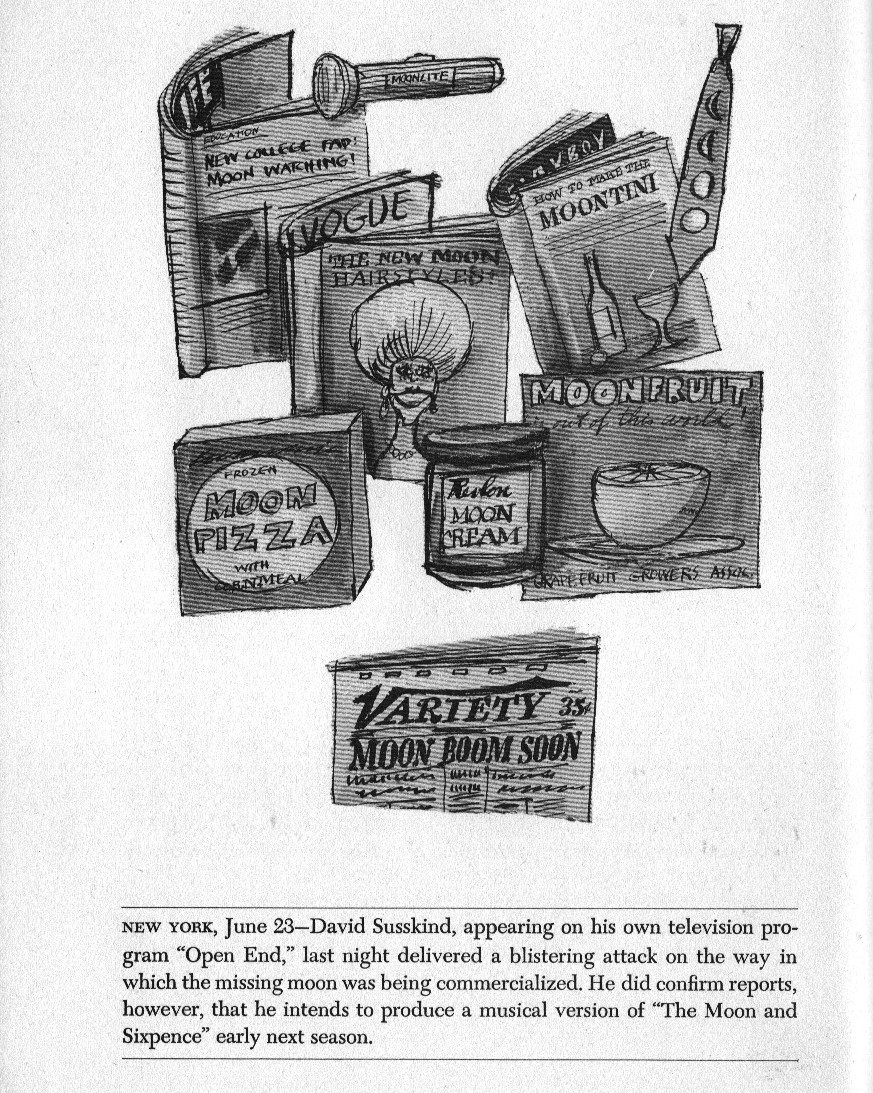
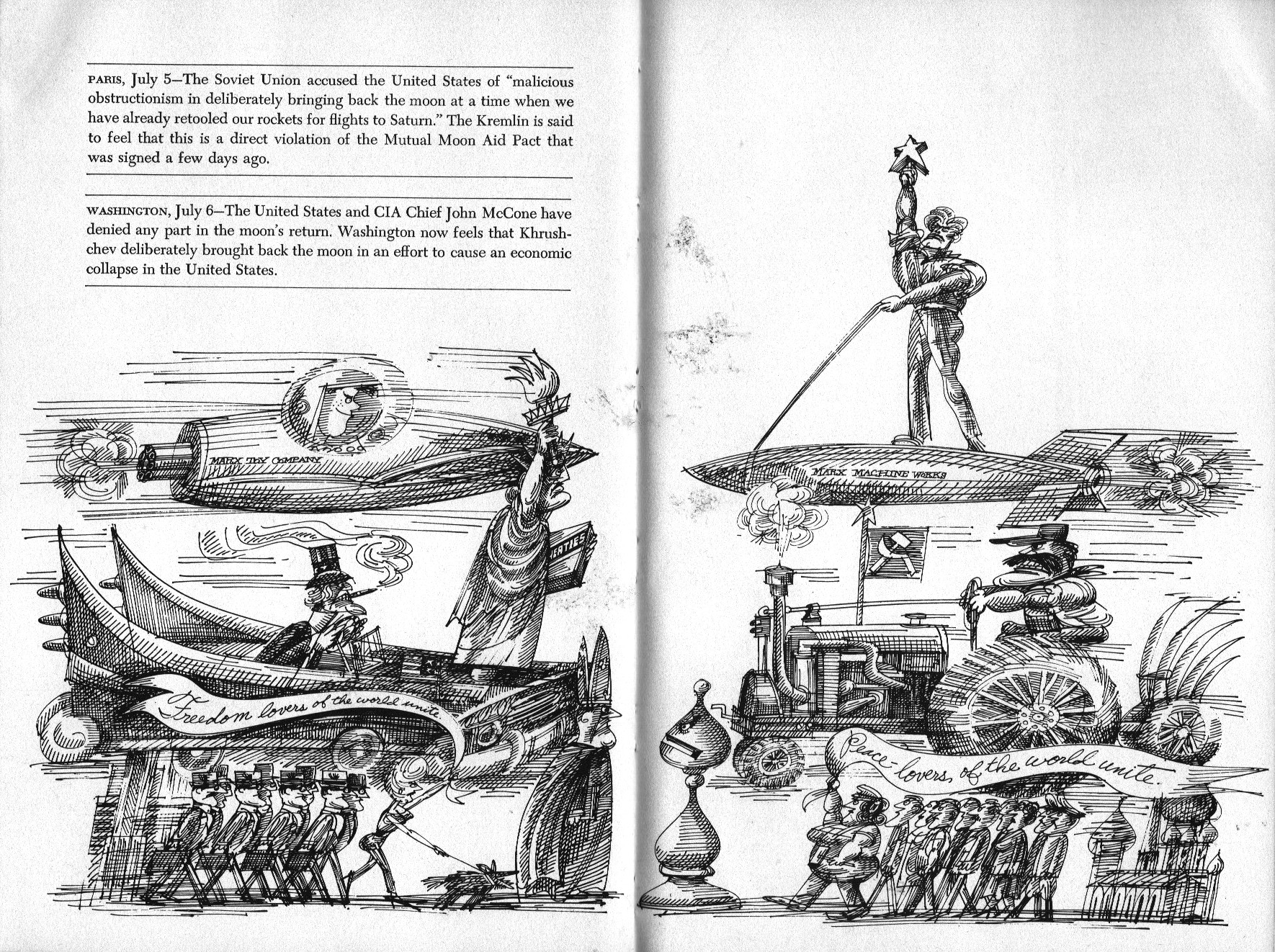
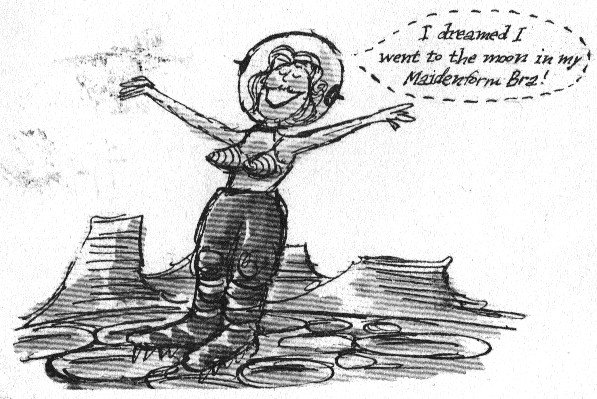

Recent comments